Finally. The main reason that we came to India, and the main reason for Goa. This is why our little basement suite was near nothing walkable. Because it was near Rita’s.
Day 1: Introductions
Our time cooking always started with a casual conversation with Rita’s husband, Sanjay. He scoped us out for what we knew about Indian food, which turns out was surprisingly little. Each province has their own type of cuisine. Being in Goa, were mostly going to be bringing home the Goan flavours.
Each cuisine is essentially based in what is best grown in each region. They all have their own standard cooking oil, Coconut more in the south, peanut and sunflower as you venture more north. They all have their own types of spice palates. Now we don’t know what they all are, but we did figure out Goan. Garam masala, cumin, coriander powder, a little bit of turmeric, and mustard seed and salt are your big 4 flavours. Then there’s about 20 extra ones (chili, cardamom, cinnamon, etc.) that go into whatever needs them.
We then got a quick run down for coffee and masala chai. Here’s a tip. Make your coffee with water that has been boiled with cinnamon sticks for 5 minutes. What a bonus that was. The masala chai was fairly straight forward. There’s 7 masala chai spices, mash them together in a mortar and pestle, and then boil with black tea.
We took a market trip this day, picking up all sorts of fresh herbs and vegetables. Produce markets are the main source of grocery for the locals. The prices and qualities of ingredients are better than at a local supermarket. The amount of chili’s and spices is crazy too. Everything that lasts a while is here in great quantity.
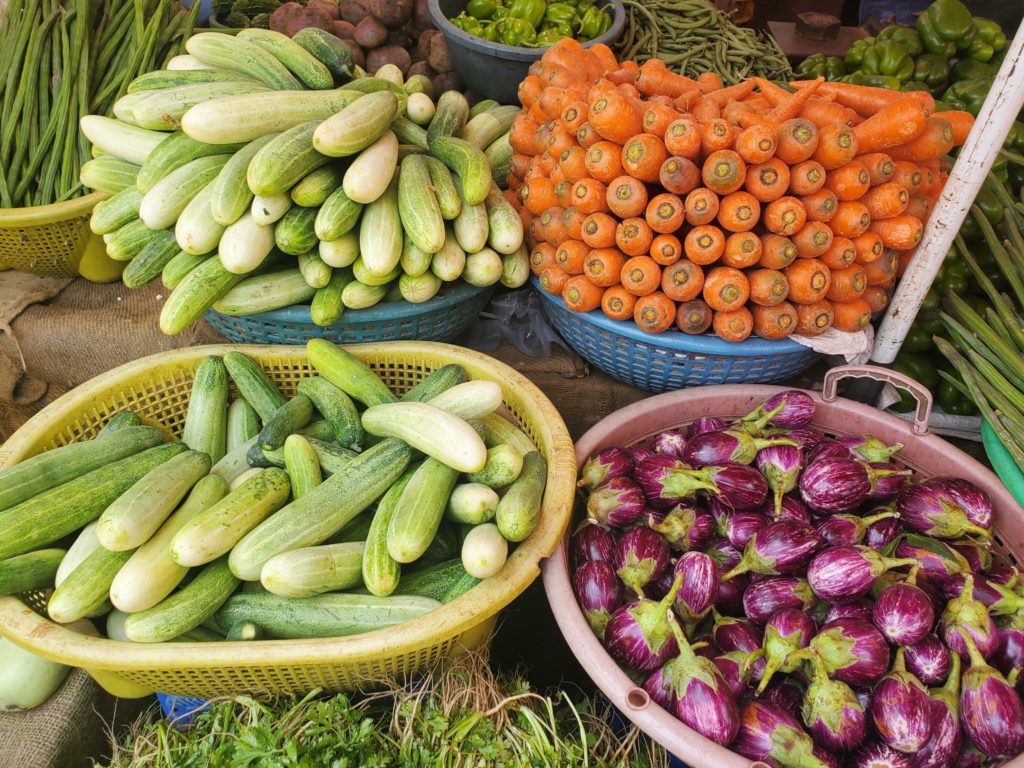
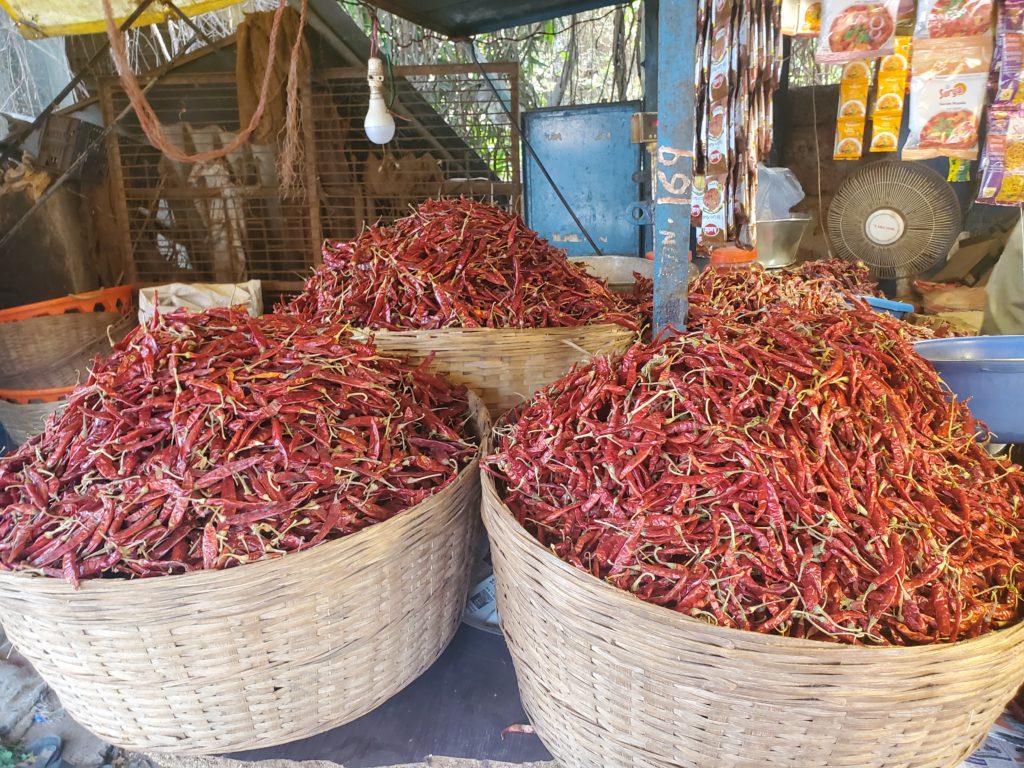
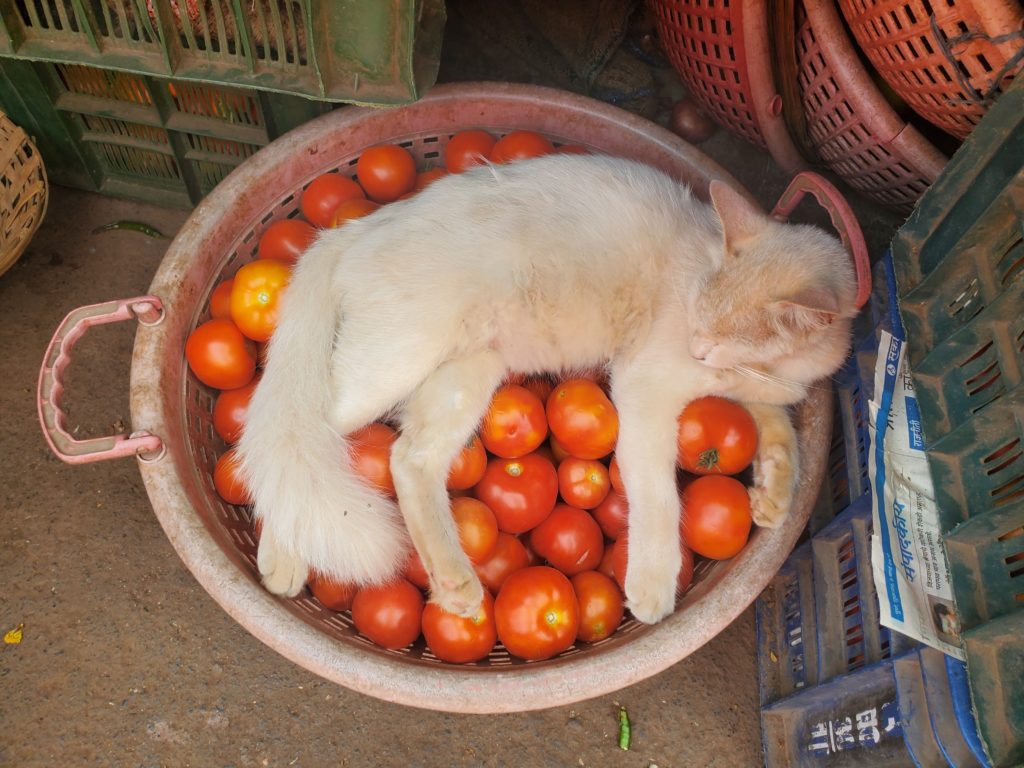
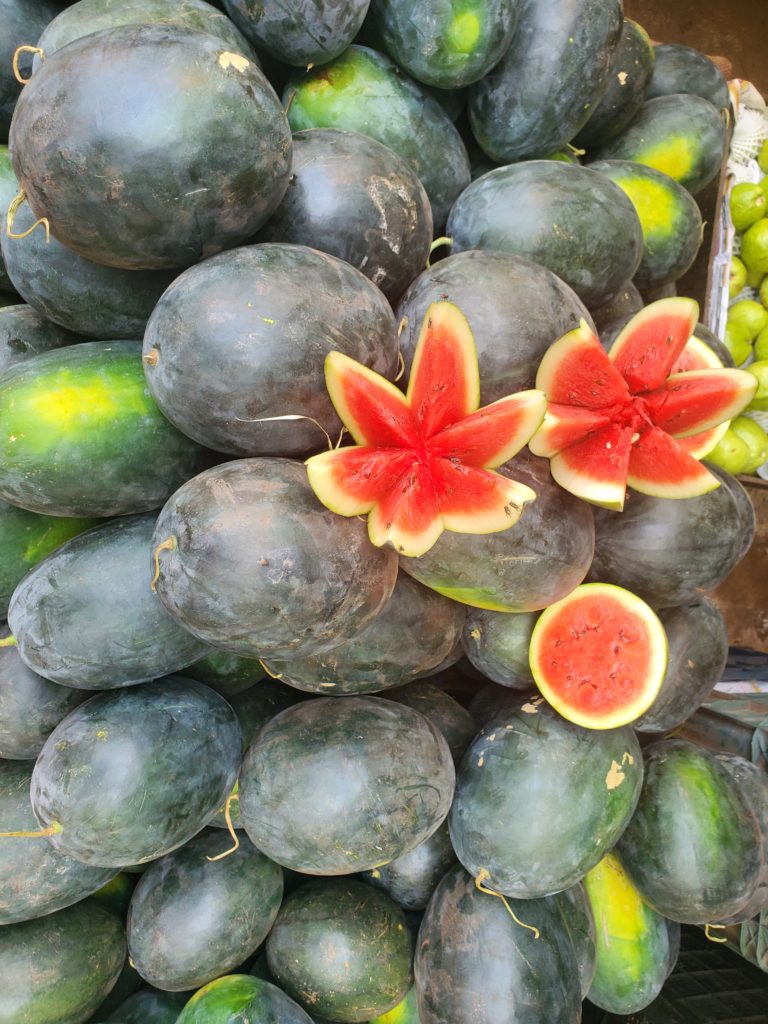
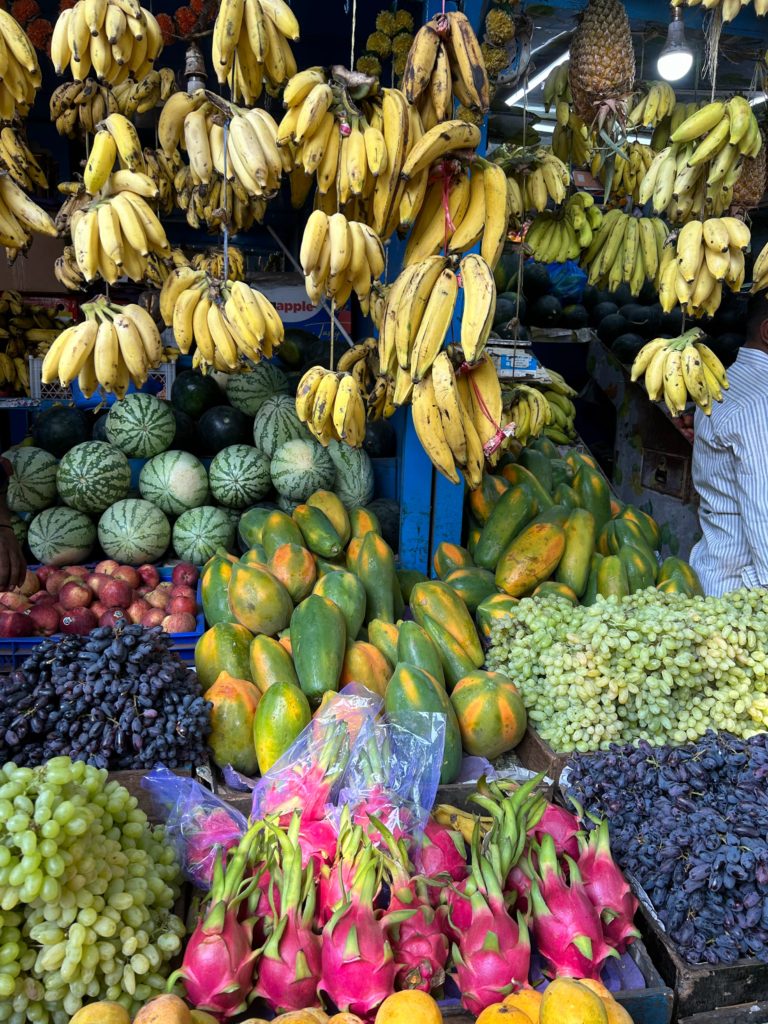
For food creations today, we had two appetizers, two mains and a dessert. Everything was all made all at once, and it only took two hours to knock all the cooking out. We started with samosa dough, then let it rest (lots of oil in the dough). Then knocked out the spice marinades for our vindaloo (chili based curry) and cafreal (coriander leaf based curry). The marinades are similar. Get all of your ingredients, blend them in a spice blender, and slowly add water between pulses. Eventually you get a thick, creamy curry. In this time, we prepared a dry rub for some prawns.
Cooking everything was quite simple. Cook down some onions first. Then add your meat (if the curry is meat) to the pan to sear. In goes the curry for a while, and at the end, your seafood or paneer (if it exists). When the curry gets to you desired thickness, turn off the heat!
Samosa filling was fairly simple as well. Boiled potatoes, and then a whole mix of your favorite spices. Filling them was fun. We started with a cone of dough, and just crammed as much potato filling in them as we possibly could. Both the samosa and the prawns were then deep fried to give us our appetizers.
For dessert we made a Carrot Halwa, which was quietly cooking in the background the whole time. It is essentially a slow cook of sugar, ghee (clarified butter), carrot and cardamom. Very, very delicious.
The meal we had with all of our creations was quite lovely. We all got way too full off of everything, and even had leftovers for dinner!
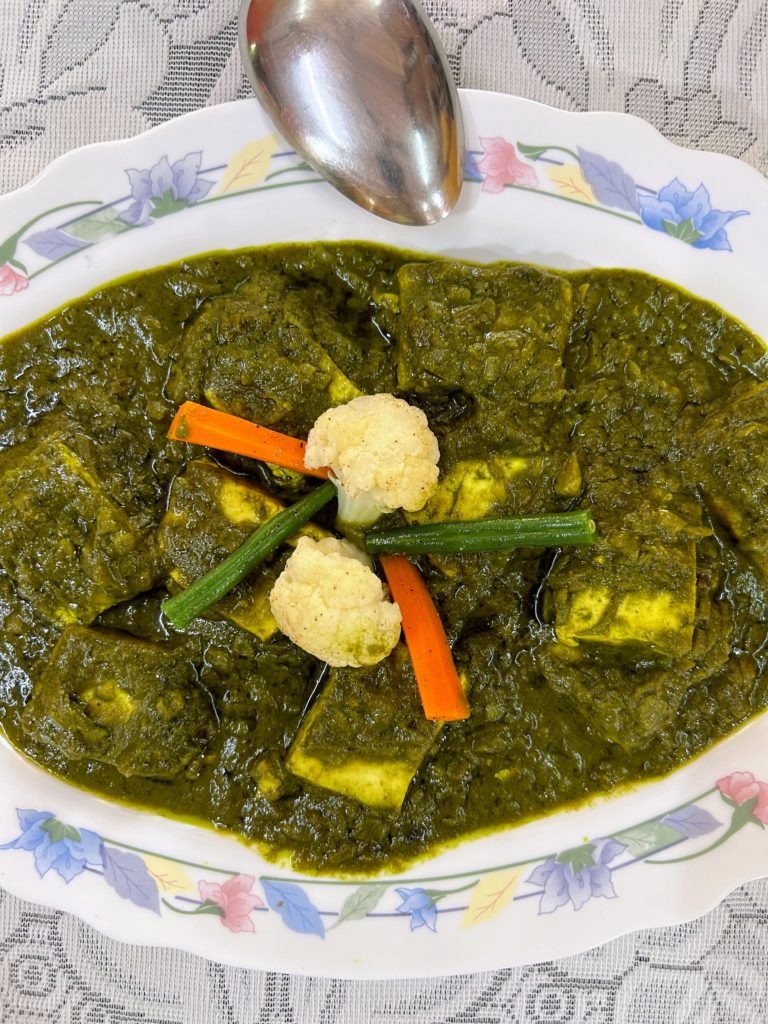
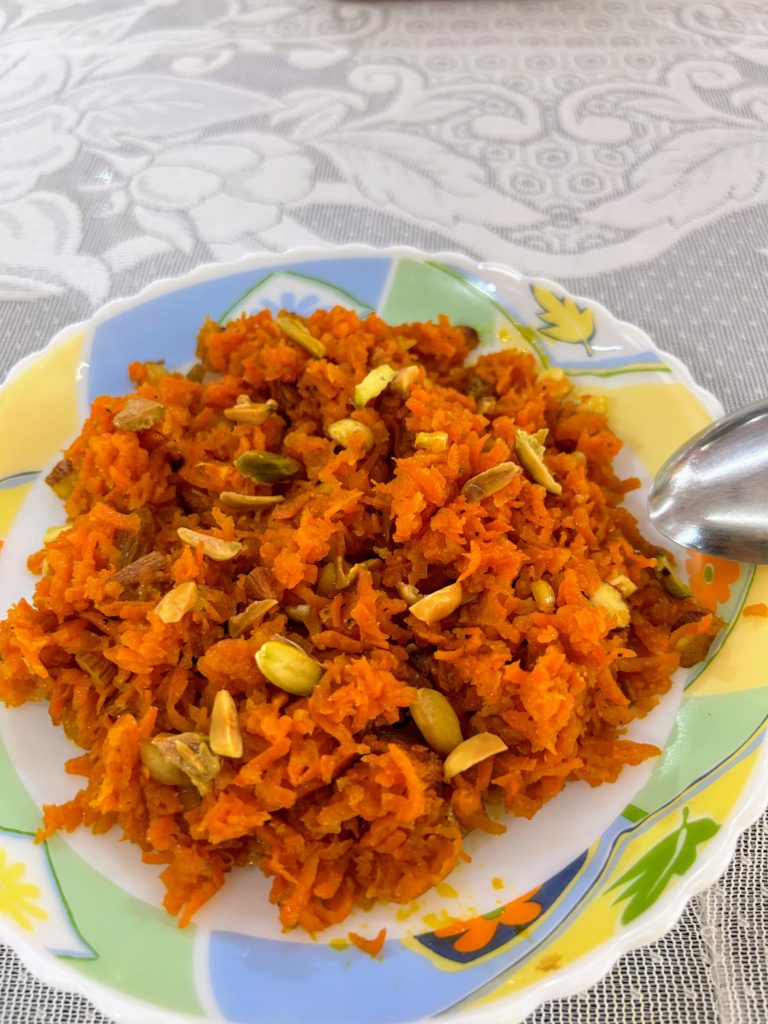
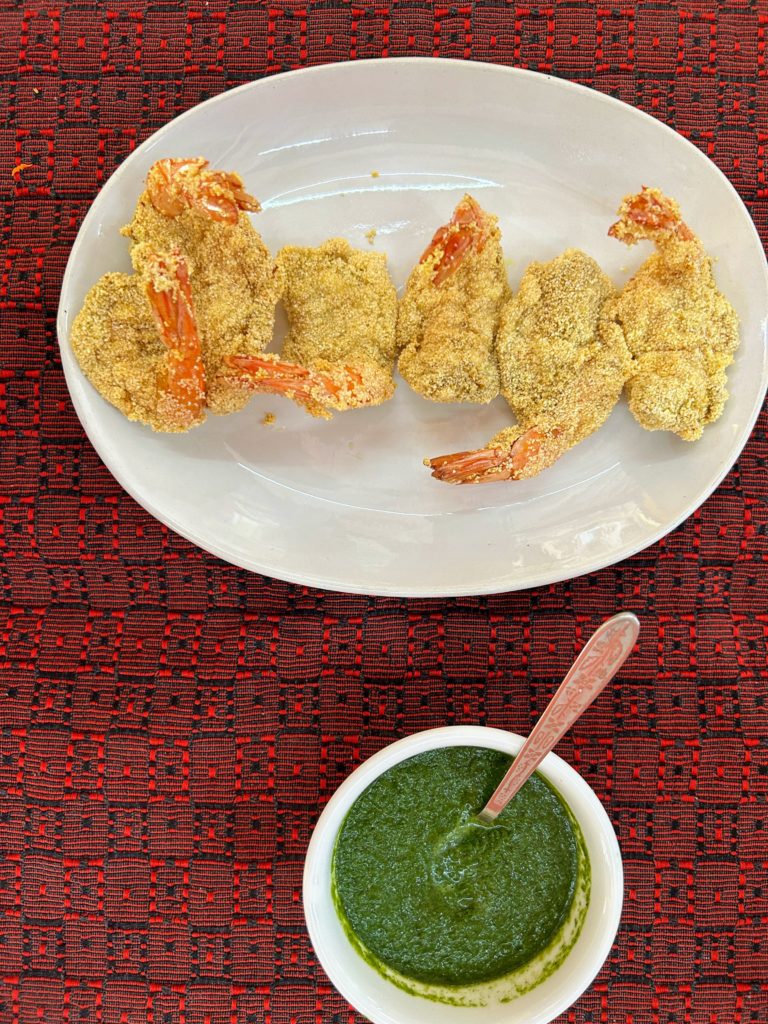
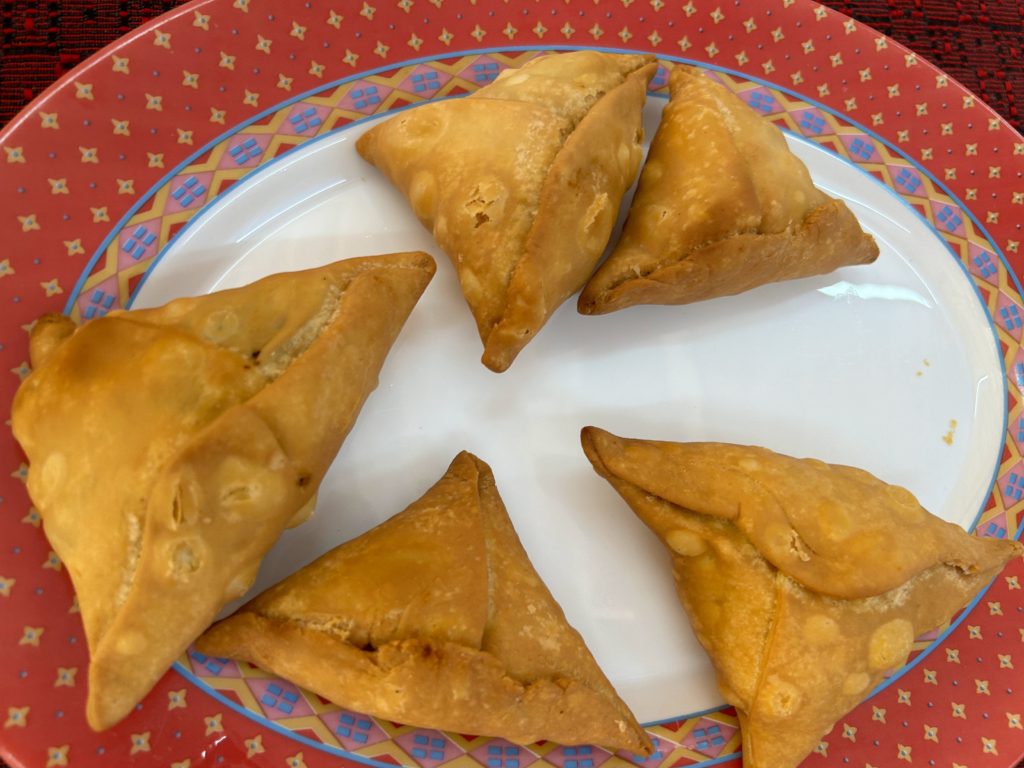
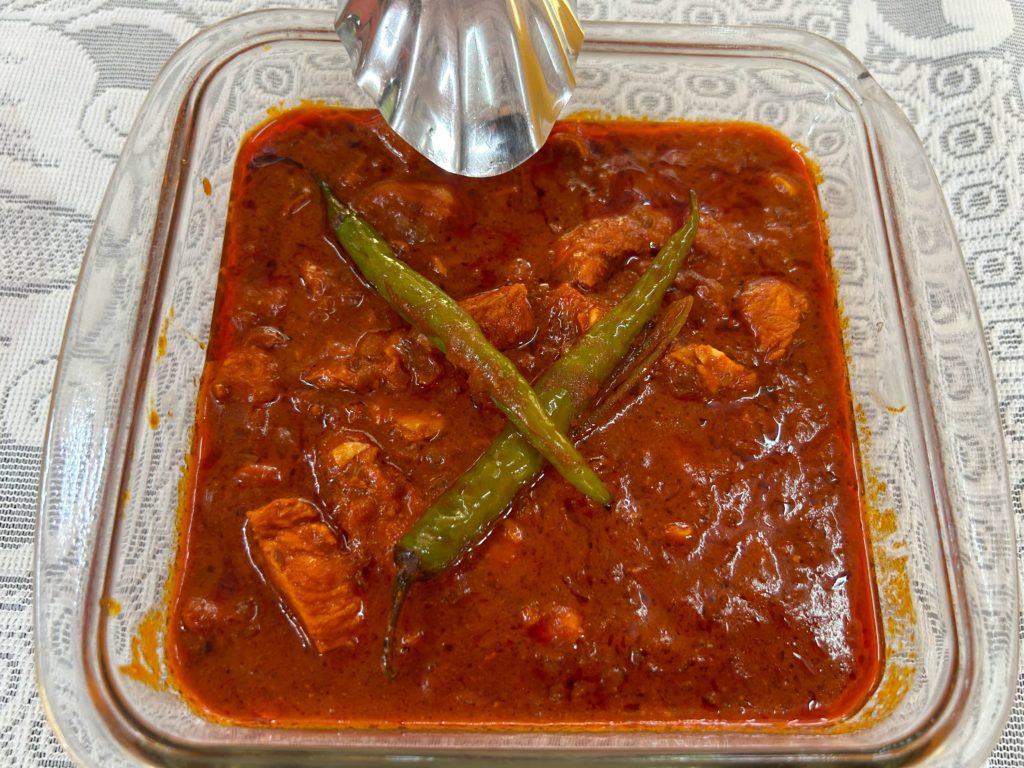
Day 2: Bread
The second day we were joined by a British family of three. The mom, Faye, was celebrating her birthday with a two week Goan vacation. We were happy to celebrate the exact day with her. Rita brought cake.
Faye had signed up everyone for a bread making class, which fit in well with what we were trying to do. We had a bunch of curries to make as well.
We started with the doughs for the breads. Puri, naan and paratha were on the menu. Puri and paratha use a similar dough (flour and water), though the puri has carom seeds in it. Naan was a bit hectic, with baking soda (powder?), yeast and yogurt in there as well. But it all went fairly smooth.
In between all of the dough making we got onto the curries. The first was lamb roganjosh. This was a stew of sorts, with all sorts of spices and goodies with the lamb. It then sat cooking for around two hours, the time was generally used for breadmaking.
The other two curries were classic, palak paneer and aloo gobi. Here we learned that most curries have a similar sort of cooking pattern. In a pan, cook your whole spices for a minute or so, then add your onion and tomato to cook down. On low heat, add your powdered spices. This is a main base for curries.
Everything else diverts from this base. Of course, the spice palates for all of them may be different. For the lamb, we added lamb and water and let it simmer. The palak paneer had blended spinach with spices added to the base. And the aloo gobi just had the veggies put in with the base, no extra goods.
Cooking the breads was fun. The puri was deep fried, and it inflated like a balloon quickly after it touched the hot oil. We made some stuffed paratha as well (potato base on the inside). It gave a nice little extra flavour. The naan was our favorite to make though. We learned a technique where we put water on one side of the naan. It then slightly sticks to the pan when cooking. This lets us flip the pan over, and toast the naan over the open flame.
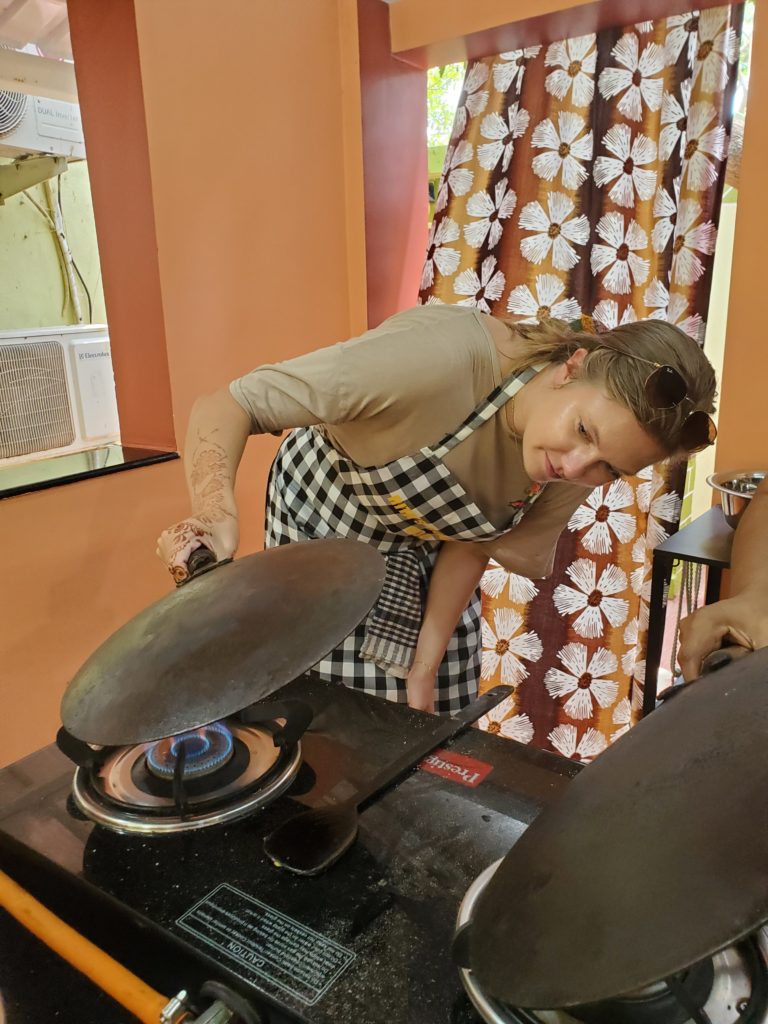
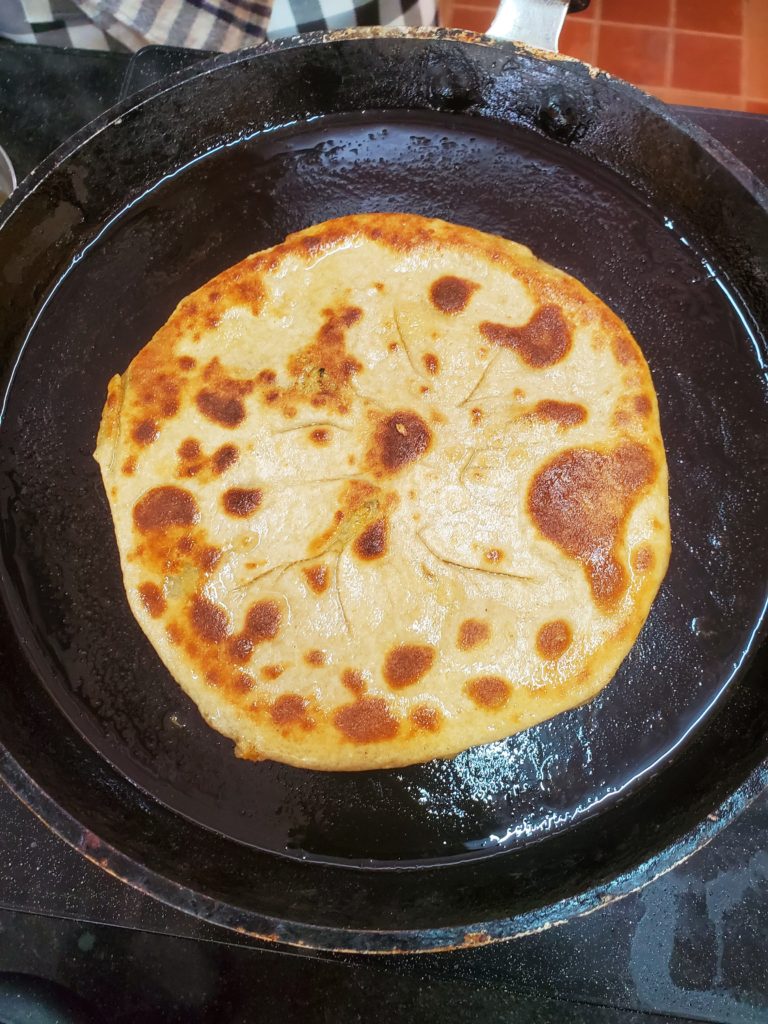
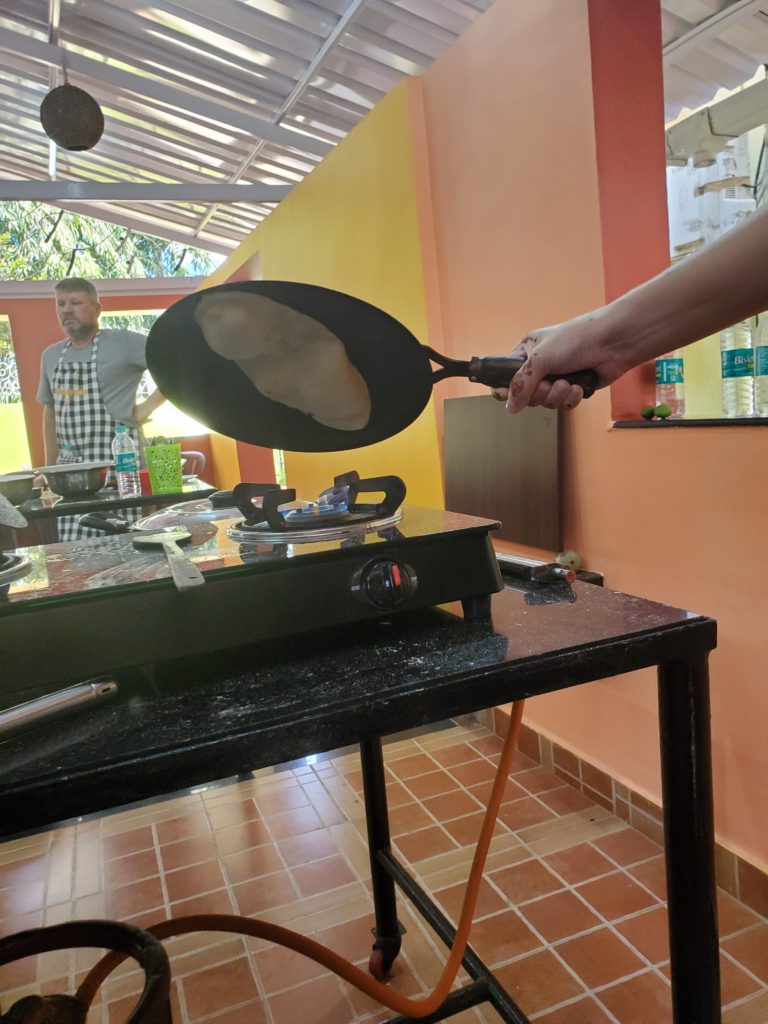
We were a bit faster than the family at making everything, so we had a bit of time at the end to take notes and rest. But the lunch was great.
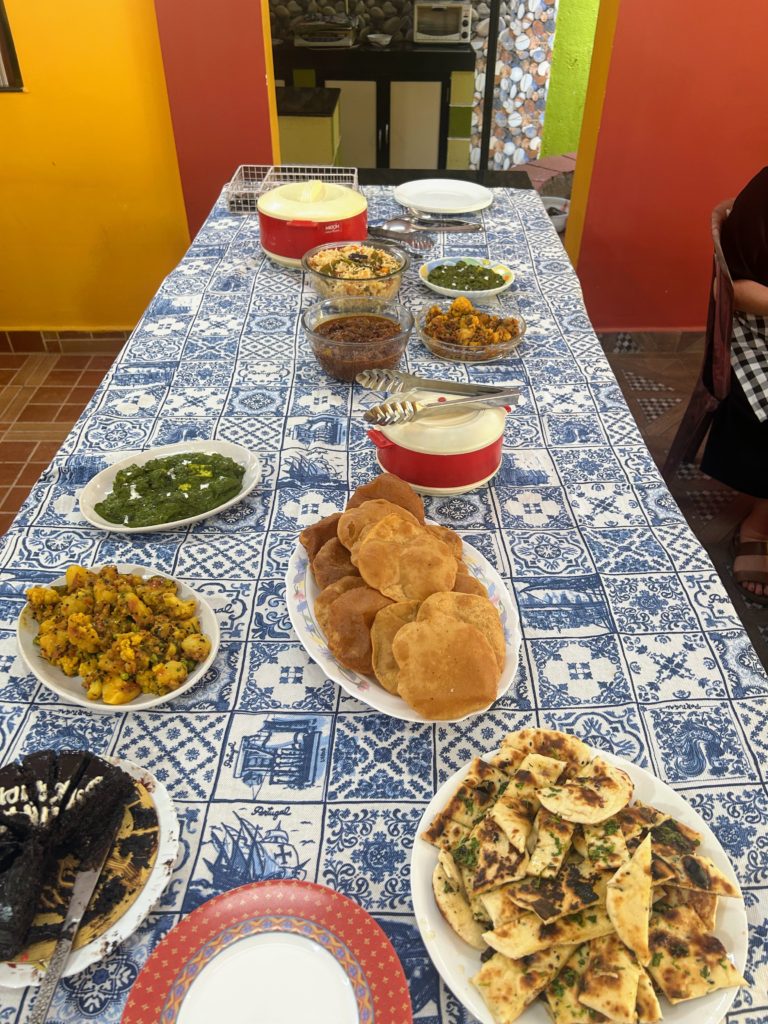
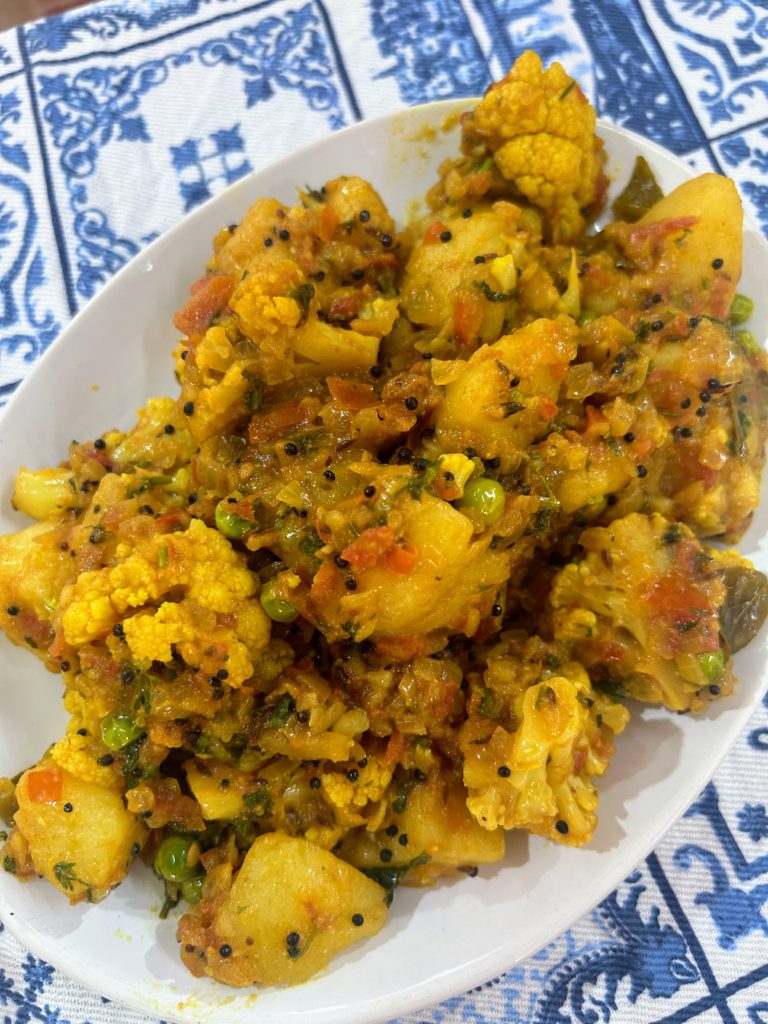
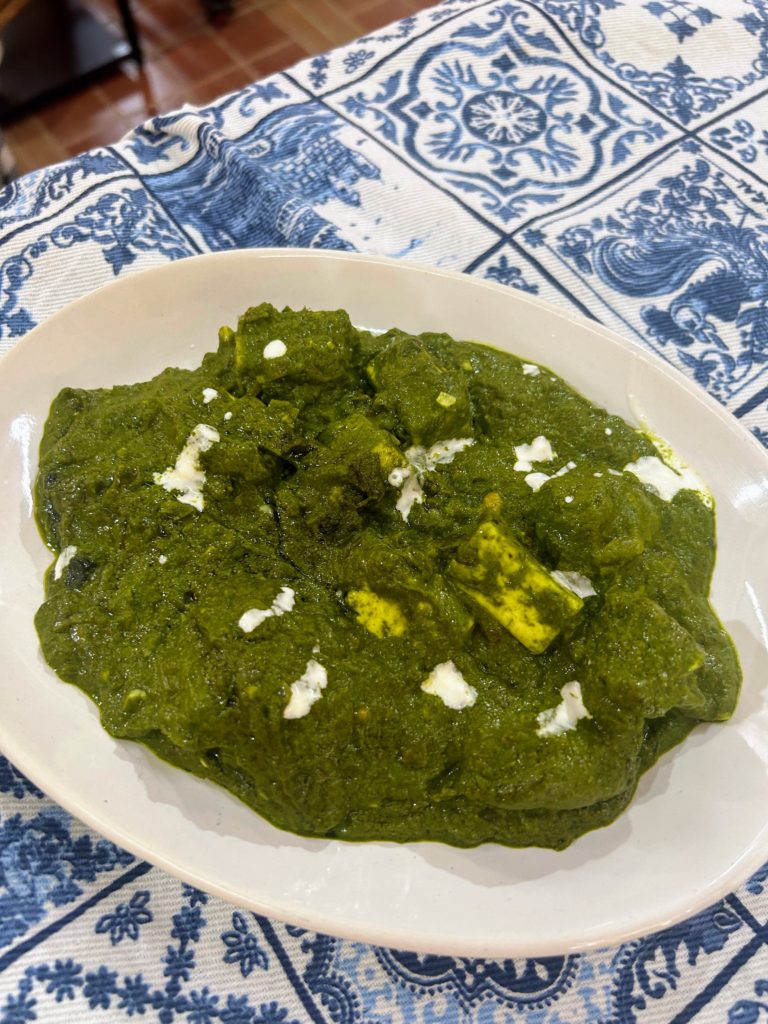
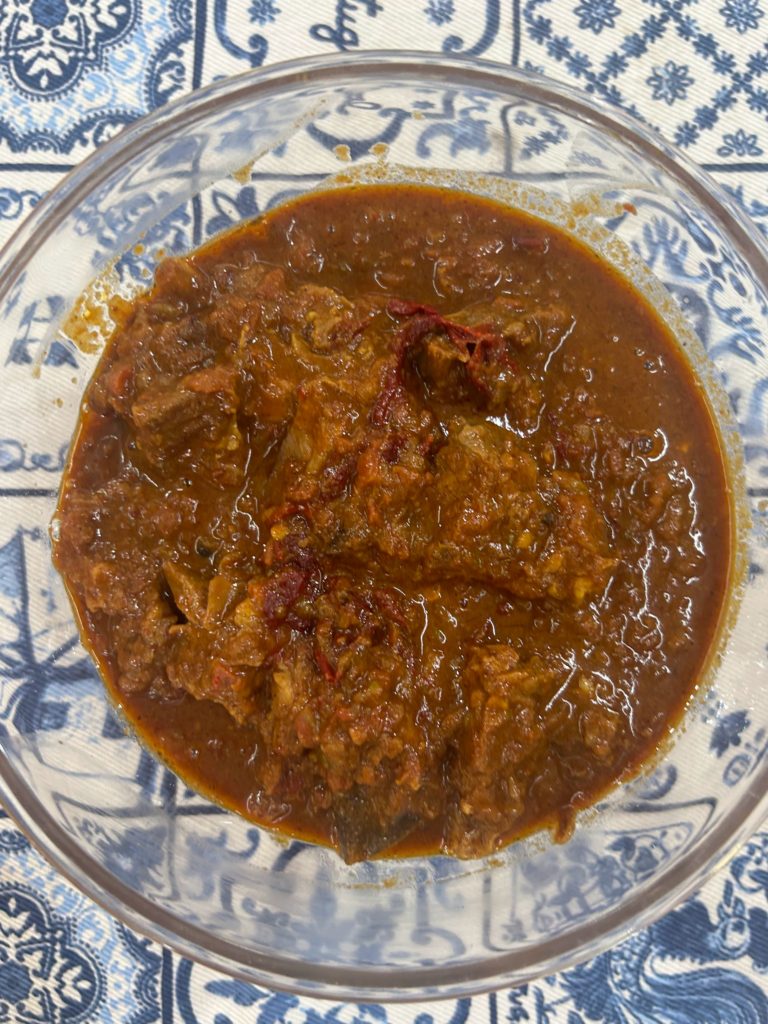
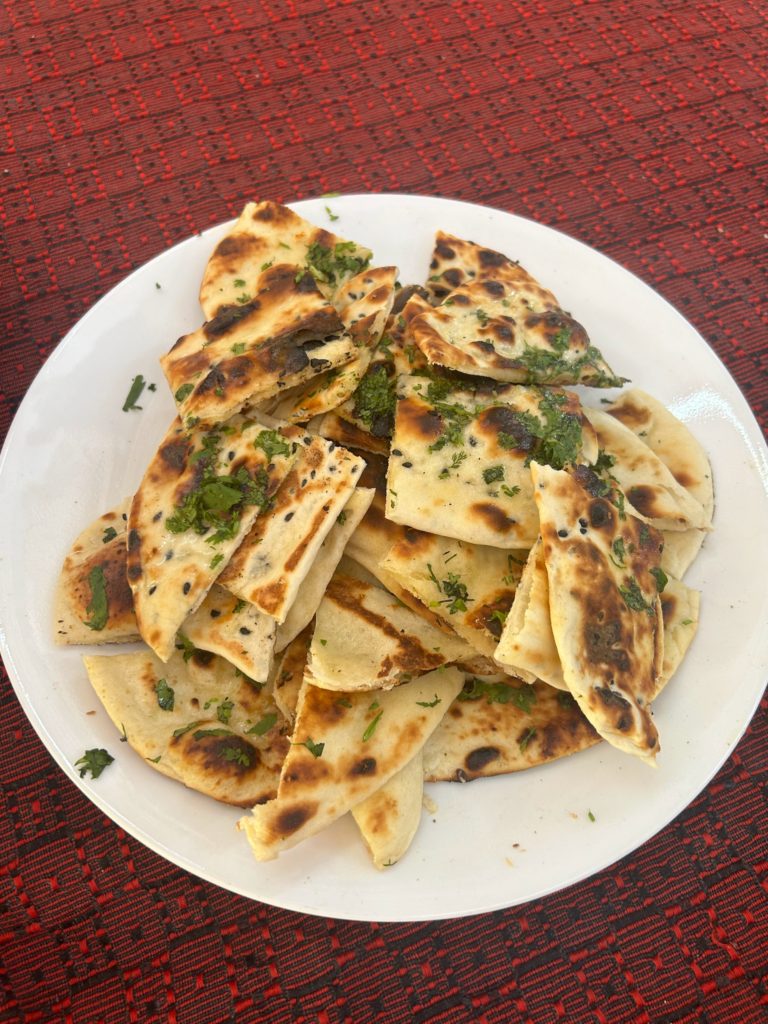
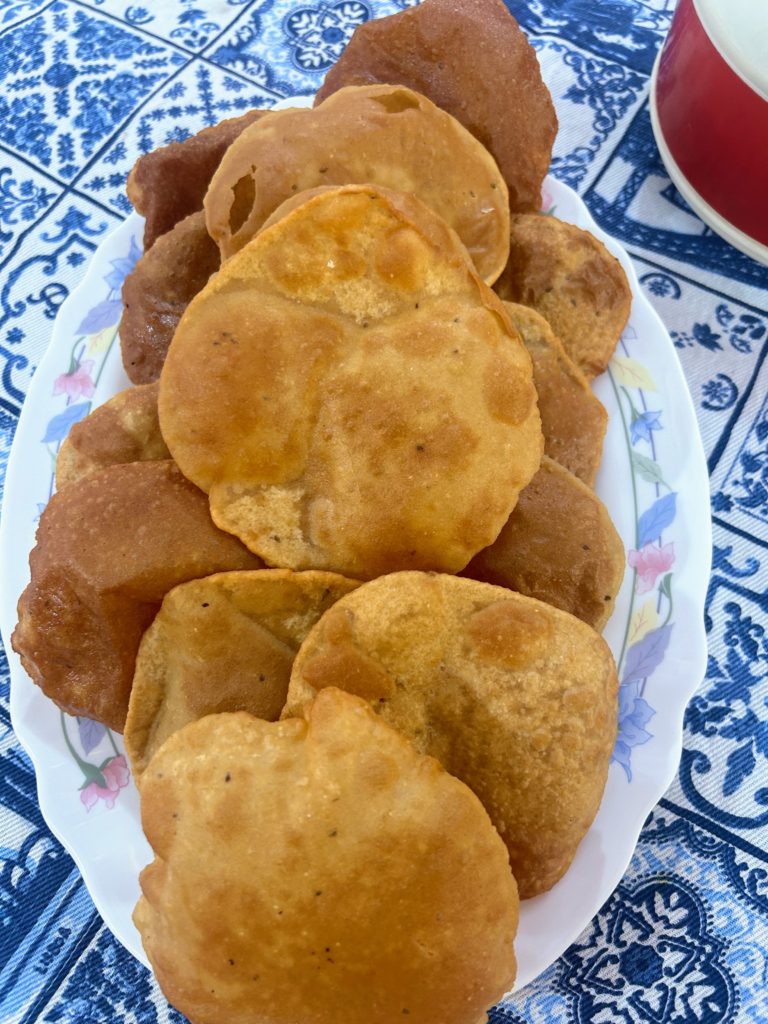
Day 3
So it was just us finally. Rita had seen how eager Cam was to learn everything, so she chucked a couple extra dishes in there as well.
Somehow, over two and a half hours, Rita directed us to create a rice dish, three curries, a veg fry, dessert and a couple small sides. It felt like we simultaneously did them all at the same time as well. We had help though, Samra and Manisha help us with prep work and clean up. This allows is to focus on the spices and techniques. And there were a lot to go through.
The stuff that takes longer we started first, so the okra fry started it all. It cooks at low heat for a long time (add acid so your okra doesn’t get slimy). This ended up being a total favorite. We also did some stuffed okra’s, with chili and peanut inside. A nice little snack. The other snack was a pickled mango. We requested to add this one to the menu, as we had some in Kerala that was delightful. You need green mango for this stuff though. The sour is important.
We used a pressure cooker for the first time today for a dahl. What a game changer. These pressure cookers are a pot with a gasket lid, and a safety pressure relief whistle. Easy to use on the stove. It cooked the lentils really fast as well. Three whistles and its done!
The other curries were a fantastic butter chicken, and a chole masala (chickpea). These may have been our favourite curries of the week. The butter chicken had a perfect mix of spices and technique. They were both made with the same style as before. The spice/onion/tomato base was simmered to start. Everything else came in after, and it all cooks together wonderfully.
The rice dish (Jodhpuri Pulao) we made was nice too. A base of spices are cooked on their own to excrete all of their flavors, then the rice is added into the pot to cook. It all comes out as a fantastic medley of flavour to add any curry to. For dessert we had rice kheer, which was another cardamom based dessert.
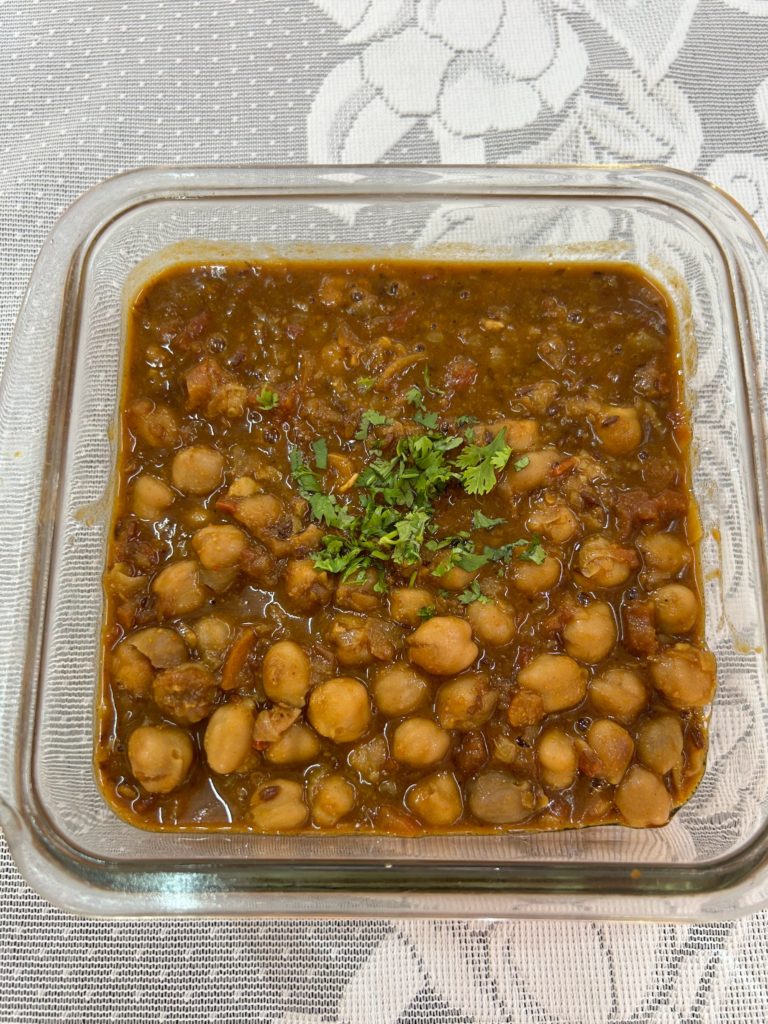
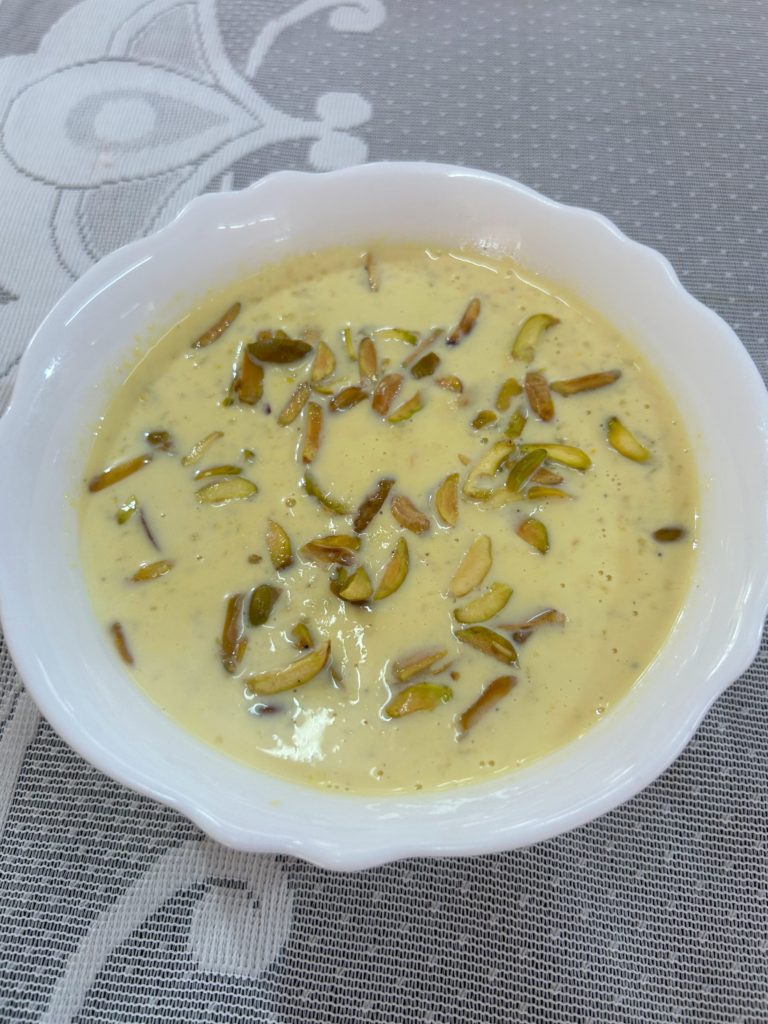
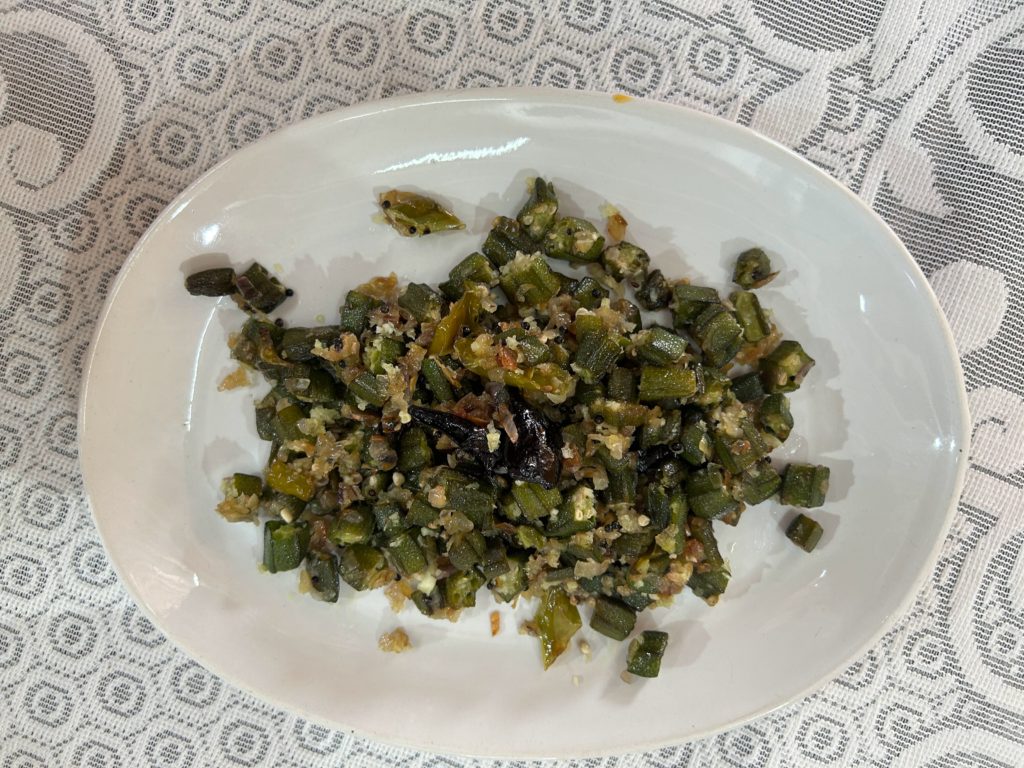
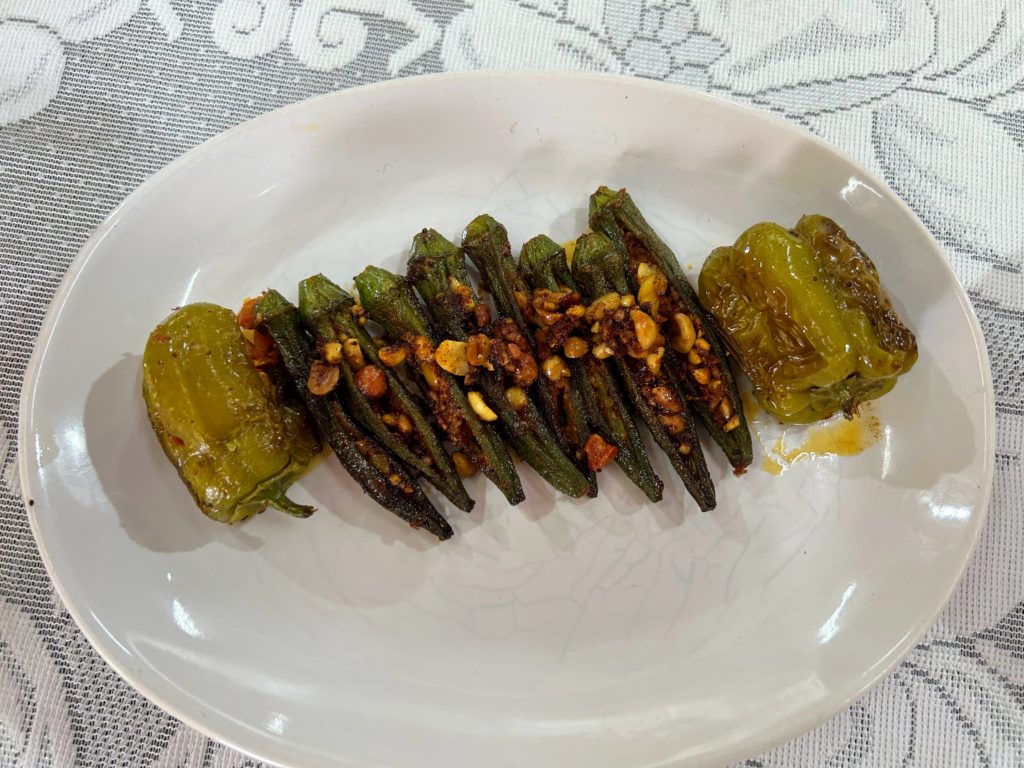
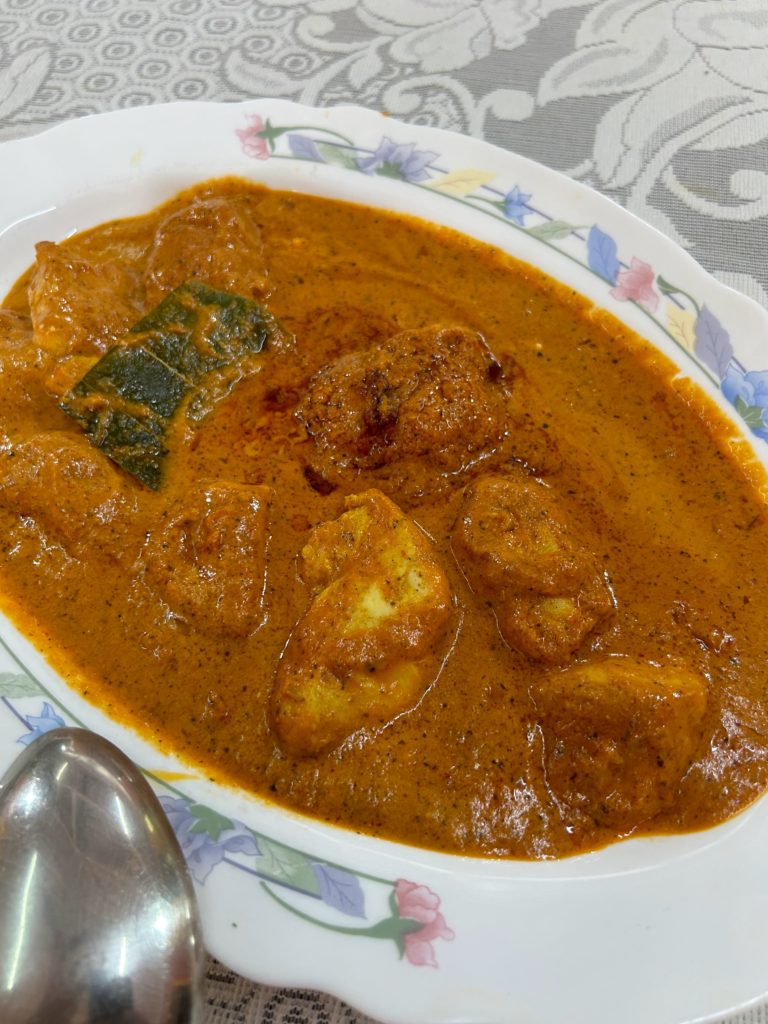
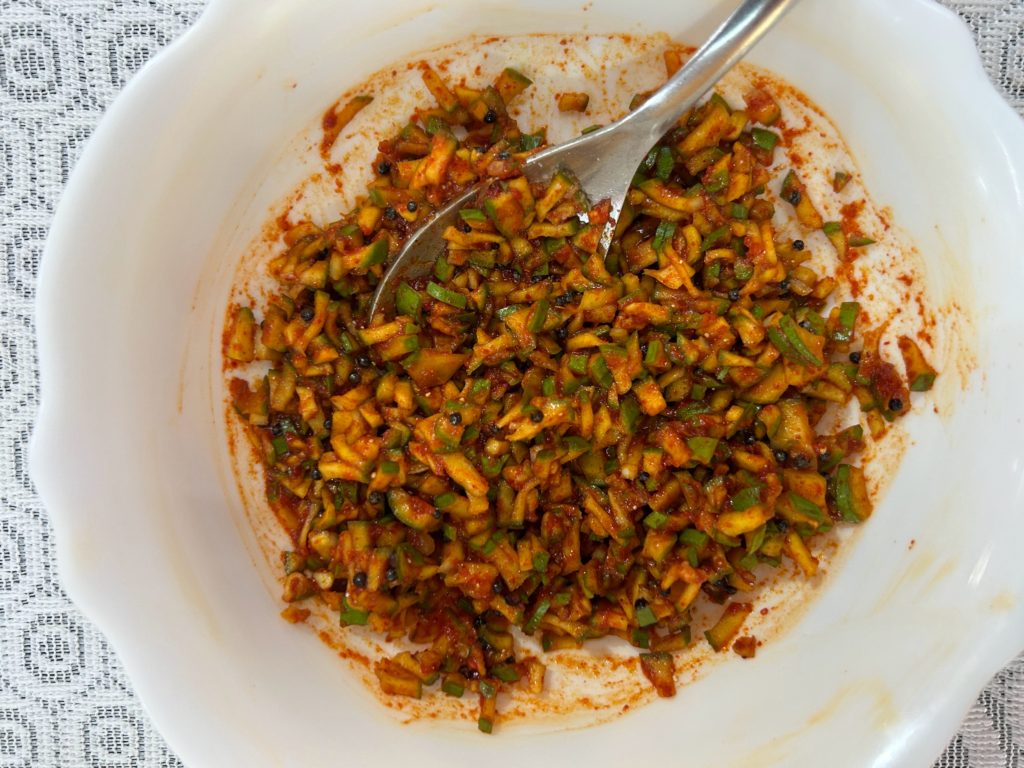
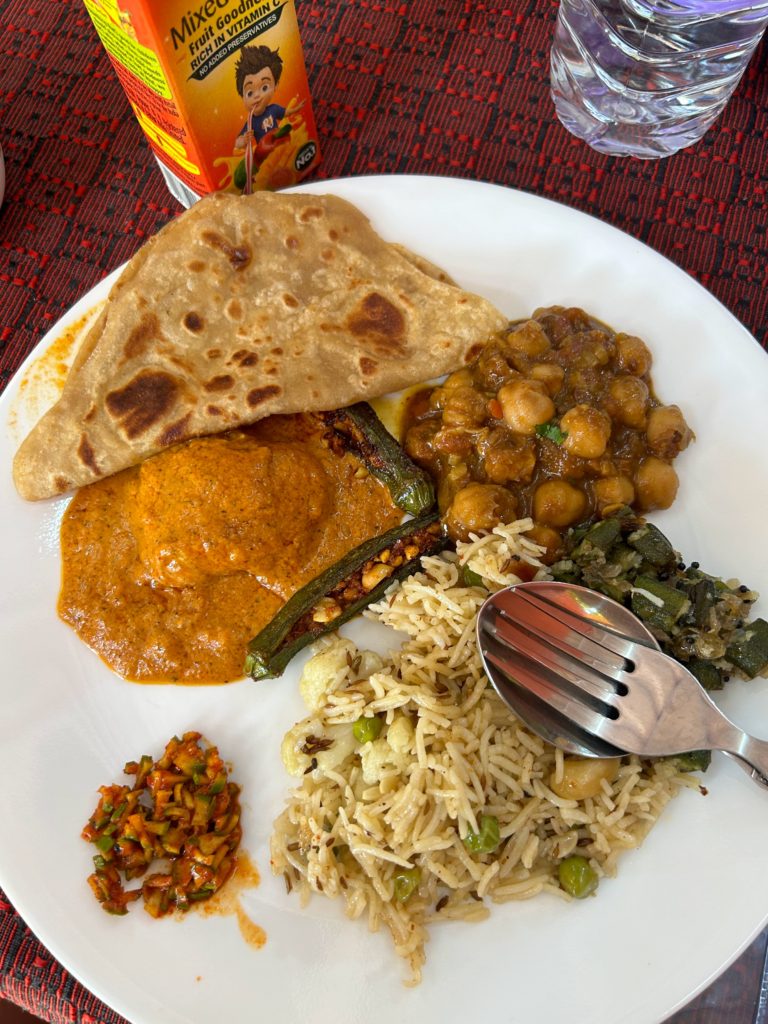
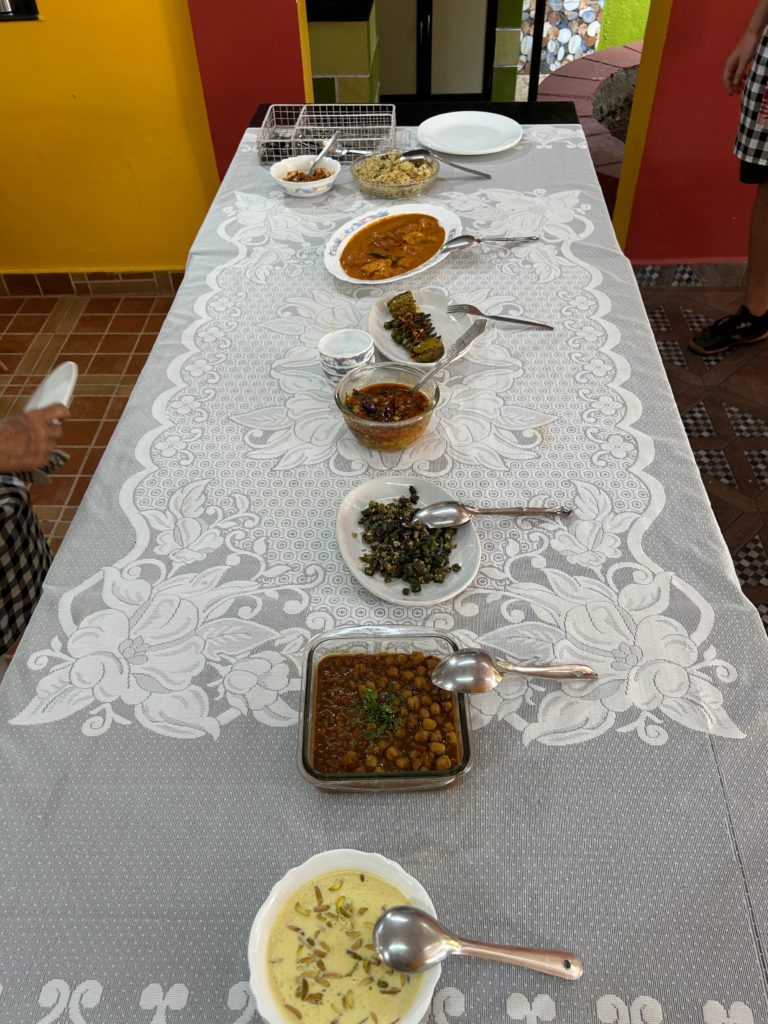
Day 4: Breakfast
The fourth day of cooking was split into two halves. The first was a introduction to Indian breakfasts, centering around the dosa. Dosa’s are a crepe type pastry made out of a lentil and rice flour dough, and filled with aloo masala, a potato filling. With the dough we made some uthappam, a pizza type thing, with all sorts of toppings. We went with tomato, cilantro and onion. There were some dosa bites as well, and a lentil curry to eat with on the side.
The whole thing was fairly simple to put all together. The dosa dough is a fantastic gluten free healthy alternative to other crepe type pastries that we have at home, so that’s a good one to have around. It’s very easy to make your own flour for it as well. Just blend short grain rice and lentils together, and there you go.
Dosa’s have been our favorite breakfast in India. Its great to know the filling now, which is mostly potatoes and onion. We also made some little bite forms of dosas, made from just the flour.
The second half of the course was another rice dish, side, curry and dessert. Jeera rice was the rice of the day, and that has been our favorite. It is a cumin forward rice, and fairly simple to make. The seasonings go in the rice after it is cooked!
Makhani dahl was our curry. It is a black lentil dahl that tastes of everything wonderful. It was simmering all throughout our breakfast making, slowly getting thicker and tastier. It uses the pressure cooker as well. Were getting used to the whistle going off at random, releasing pressure and freaking us right out every time.
Rita taught us a quick coconut cucumber salad that’s an easy 5 minute side to make. It will make a great BBQ side at home.
Dessert was a semolina cardamom pudding style thing. Cardamom seems to be the most common Indian dessert spice. I thought I was creative suggesting it a couple months ago. I guess joke is on me.
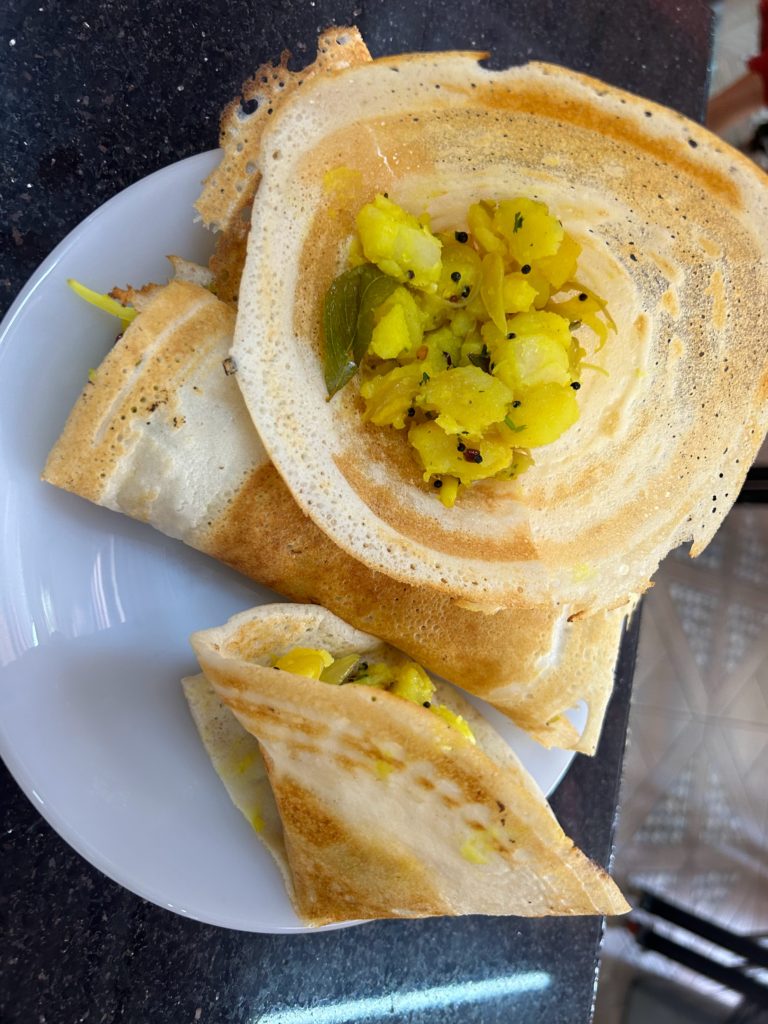
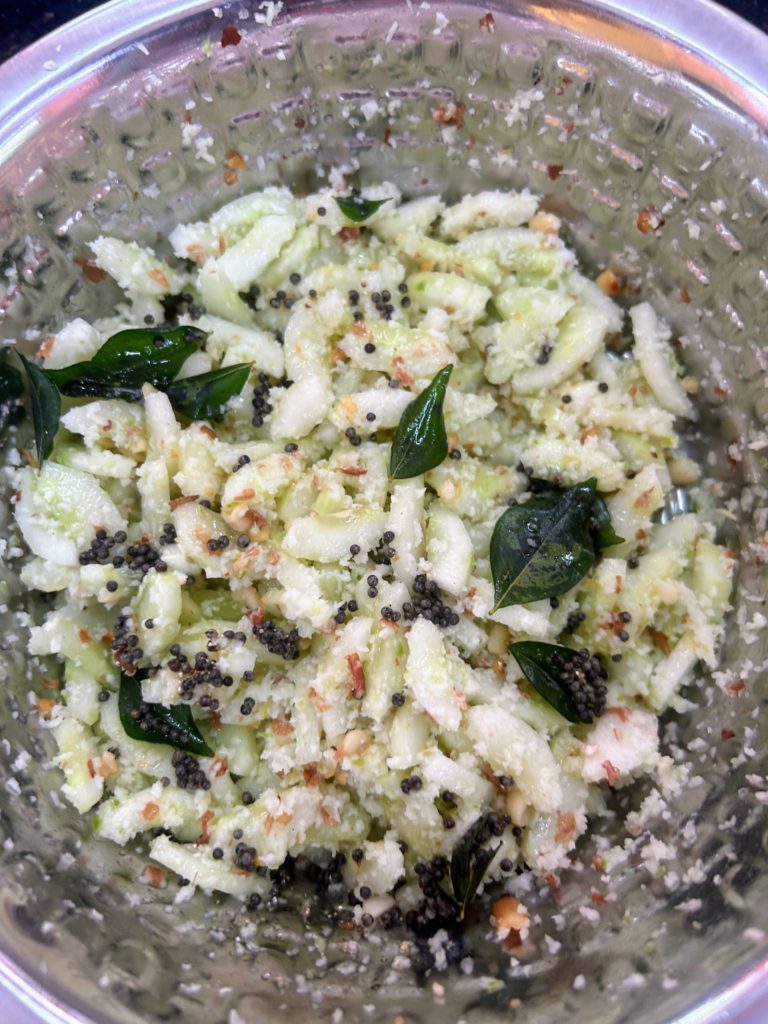
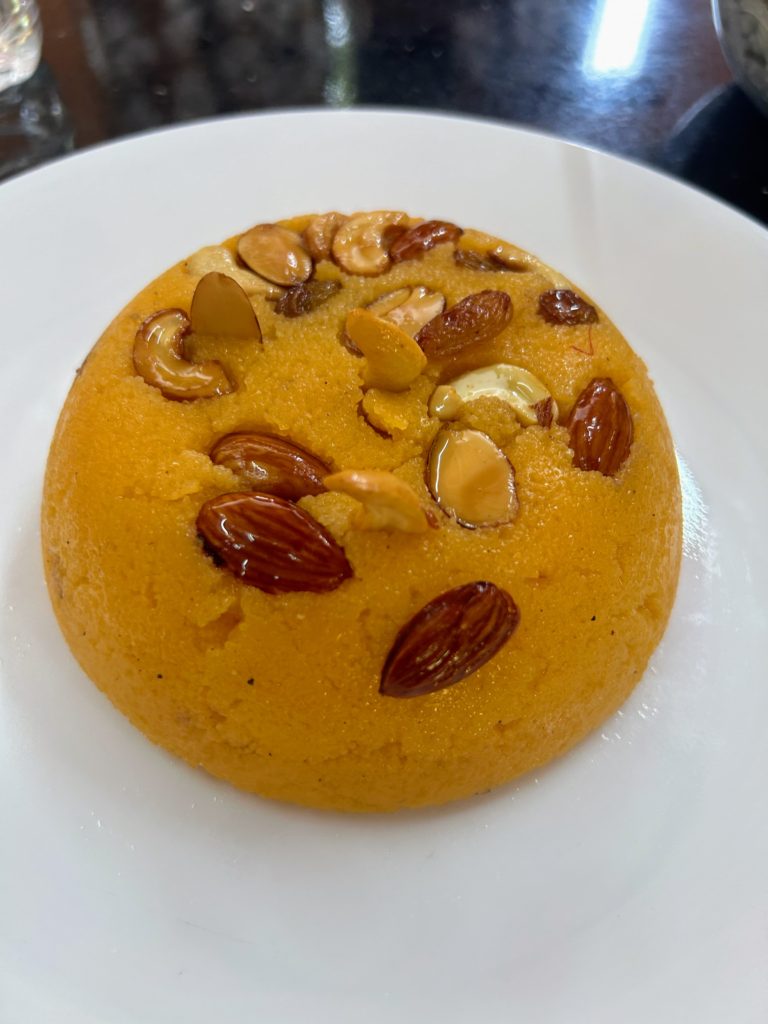
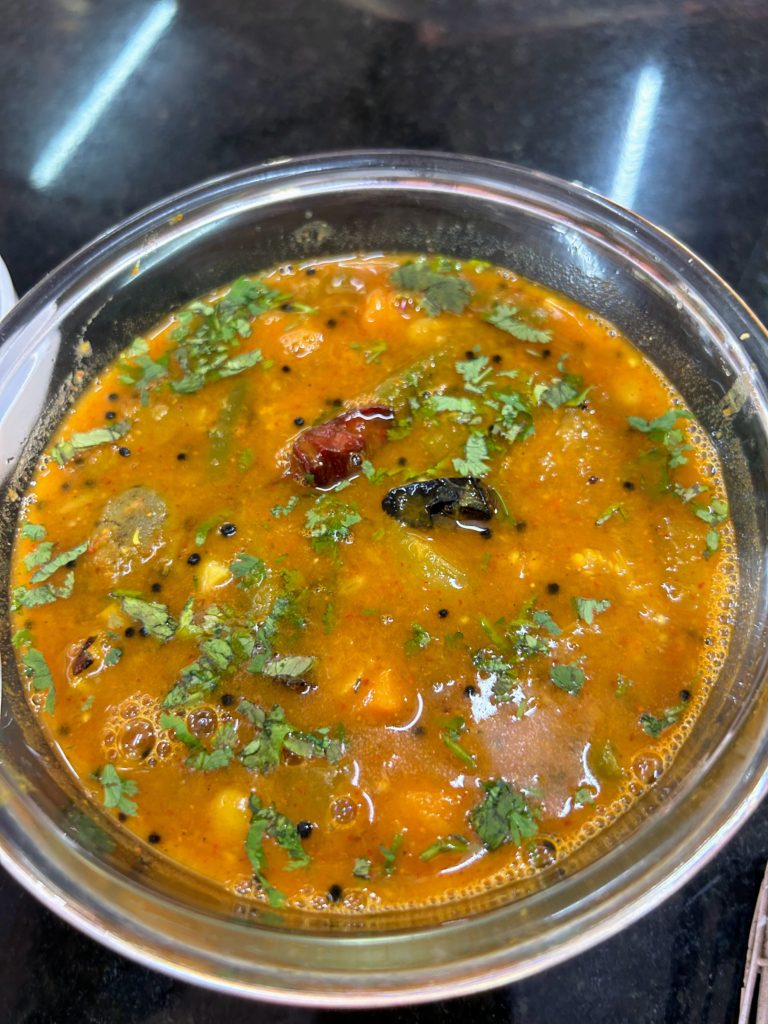
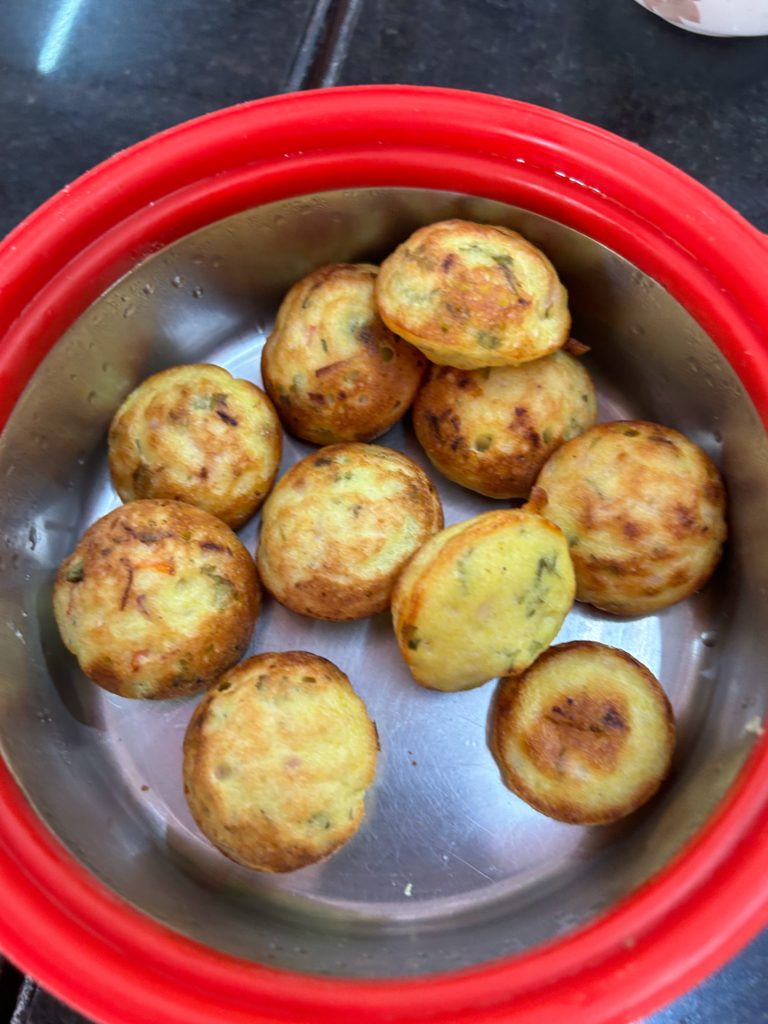
Day 5: Everything
Rita had cooked up 10 different recipes for us on our final day. And in typical Rita fashion, decided to chuck in a few more the morning of for fun. We ende dup qith 14.
We were joined by a couple from London who were taking her vegan food course. Indian cooking is fairly vegetarian friendly, and with a couple changes (no ghee, no paneer), becomes vegan very quickly. They had less recipes than us. I guess Rita has faith in our abilities.
We made a couple of appetizers today. A general veggie pakora, which was quite delicious on its own. They get made with chickpea and rice flour, so the coating is a little crunchy. We also deep fried some Udid Vada, which is essentially a savory chickpea mini donut. These went with some red coconut chutney, and tamarind and date chutney. The chutneys today were our favorites of the week.
Making the appetizers and chutneys were merely a side project on our day. Neither of us mentally registered making the Udid Vada. It was fairly simple to do, just grind come chickpea lentils, add some yummy bits. Make a mini donut shape from the batter and eventually end up with a sticky mess literally on your hands, give up, and chuck the dough blob in the oil. But we were not really paying too much attention. We had many different more involved dishes to get to.
One more appetizer though. Stuffed eggplant. We took small eggplants, cut four petals into them, and stuffed it with tomato and peanut and everything else wonderful. They were left to simmer for a long time, and ended up being a top contender for favorite meal of the day.
On to the mains now. Our starch today was a chicken biriyani. Which initially involves making a standard curry base. We have learned this by now. Cook some whole spice seeds in oil, add some onion, let it simmer. Turn the heat to low, add your powdered spices, add tomato, turn your heat back up (can’t let the powdered spices burn). Mush it all together, voila. Cook your chicken in all that, and your 1/3rd done the process. We deep fried some onions for the mixture, and made some rice in spiced water. With all of the different segments done, we layered them all together like making a cake or lasagna, and let it all cook together in the end. It ended up really delicious. We also sealed the pot with bread dough.
With our rice came more curries. There was a malai kofta, rajma masala, and chicken jalfrezi. Rajma (kidney beans) masala, was quite easy. Pressure cook the beans, make a standard curry base. Mix the two, add water, let it simmer forever. The kofta was fun though. Kofta are little paneer vegetable balls. You take grated paneer, mash it so its kind of paste like, and then surround chopped nuts, dried fruits or veggies in it, then deep fry the balls. They create a soft gooey bits when you chow on them.
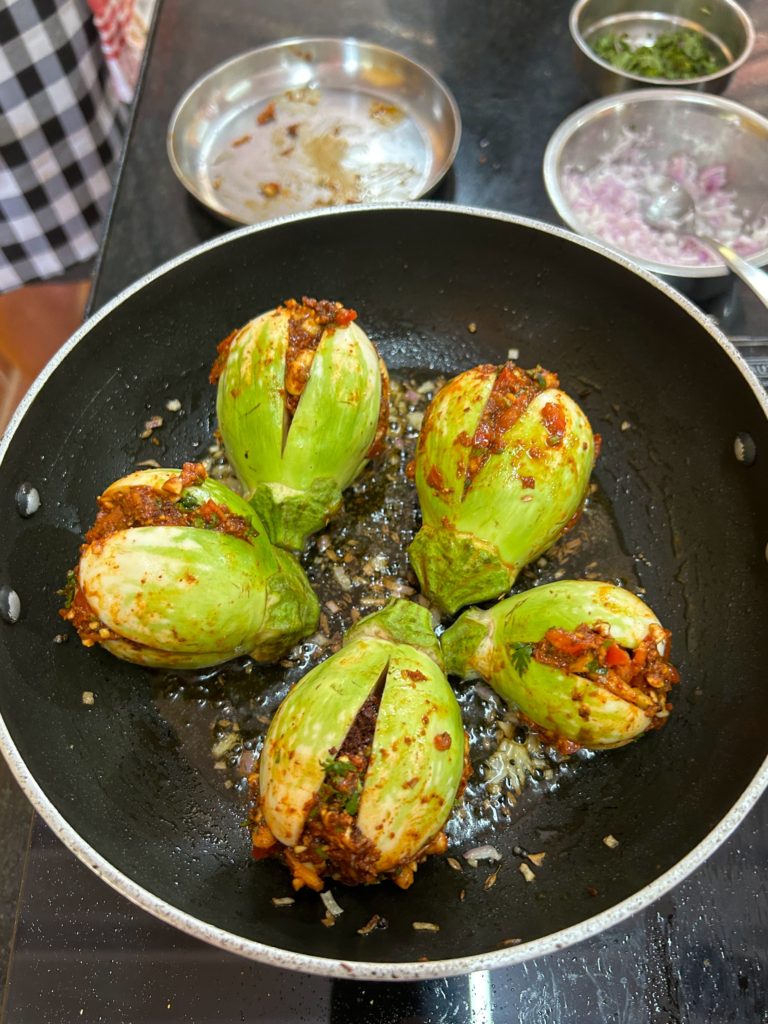
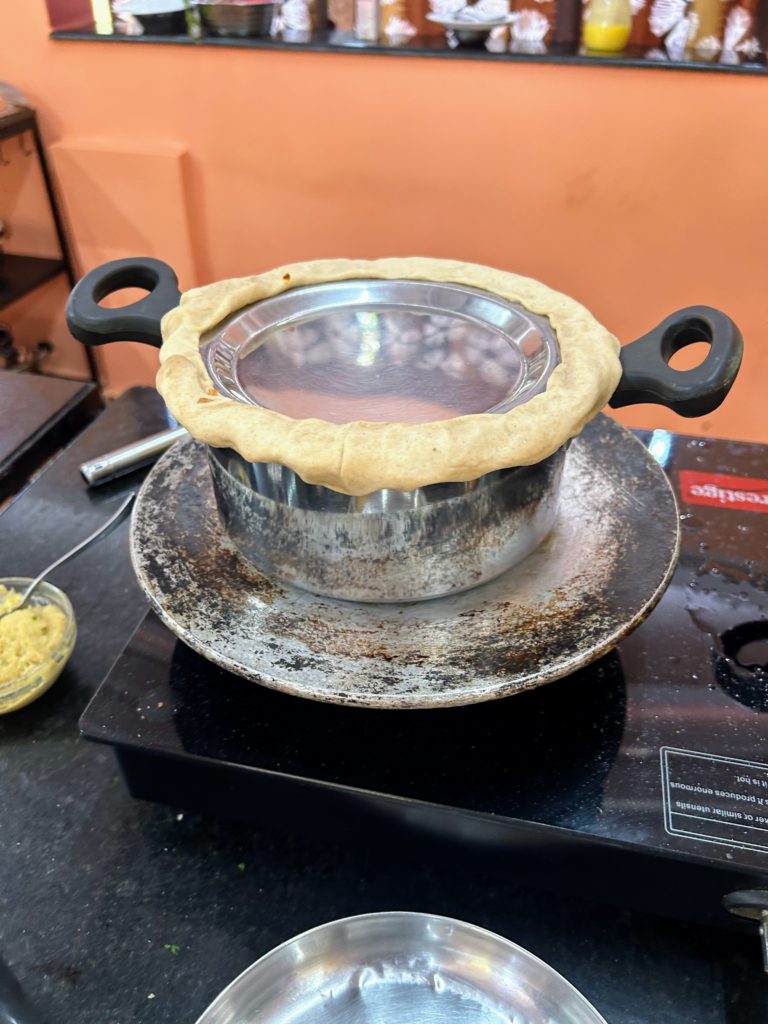
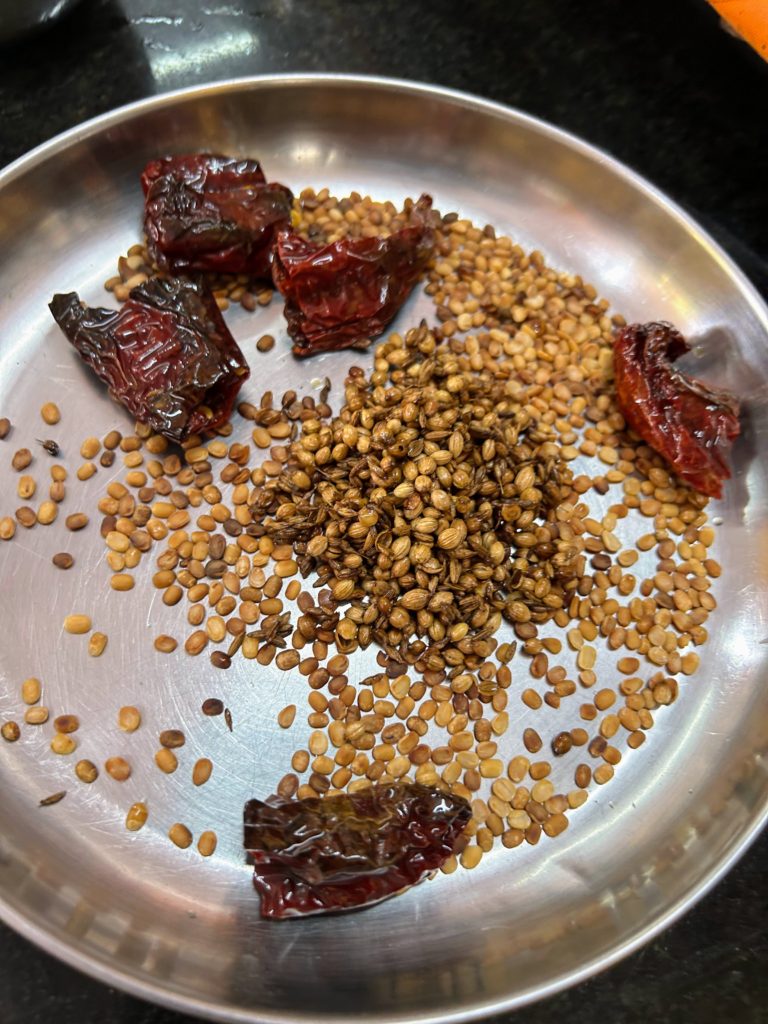
The kofta sauce was different too. In restaurants, we normally get a sauce similar to butter chicken. Rita decided to switch it up, and we made a white coloured onion sauce. It was a flavour that we have not had before. Still good, but a lot more subtle than the rest of the cooking we have done.
A dry chicken jalfrezi is the Bengal equivalent of a stir fry. Nicely marinated meat, a high heat sear of some veggies, and a dry curry base as sauce and its all good to go. This one was a personal favorite of the week.
As an aside, in India you can get all curries with gravy or dry. We made most of ours as a gravy, which is essentially the curry we see back at home. Dry is what is sounds like. Everything tastes the same, there’s just not extra sauce to go with the bread or rice it is normally served with.
Dessert today was made from the vegan side. It was another cardamom flavored desert, this time with a base of chickpea lentil and sagoo (tapioca balls). It was a nice as well, but the texture was a little strange.
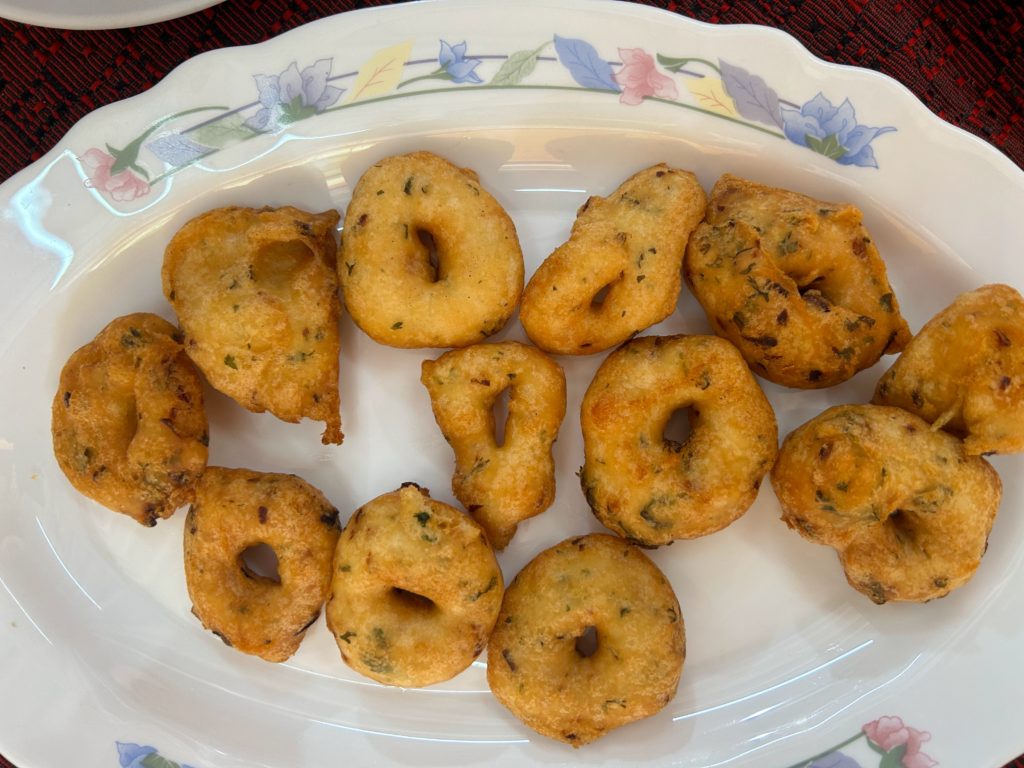
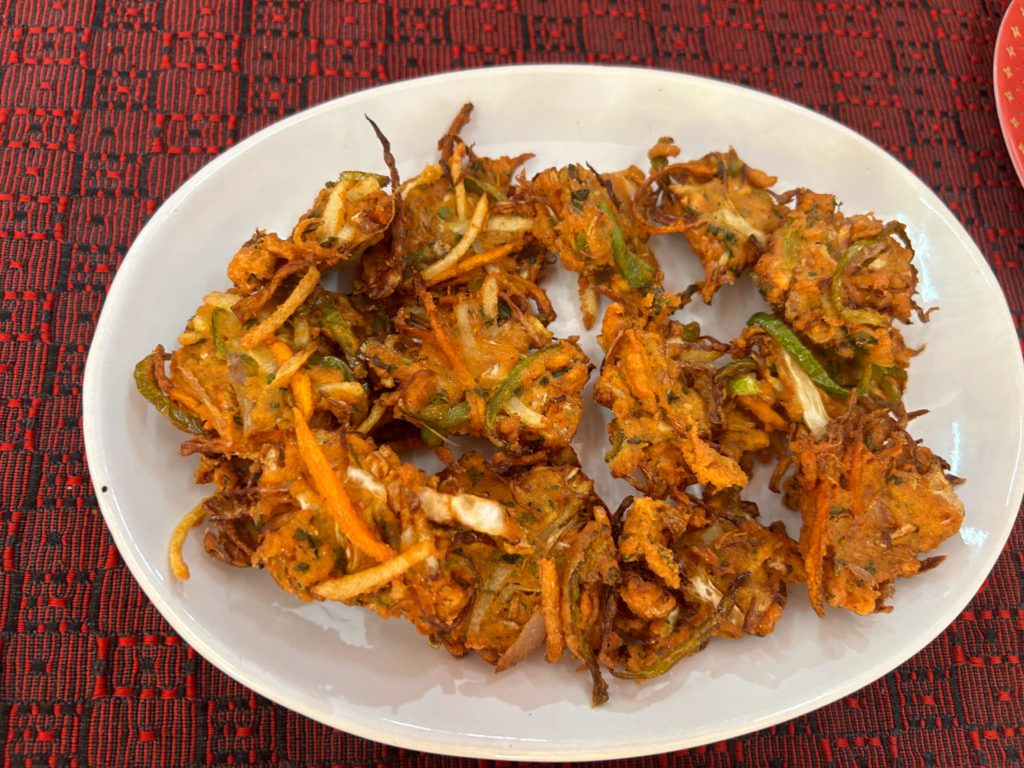
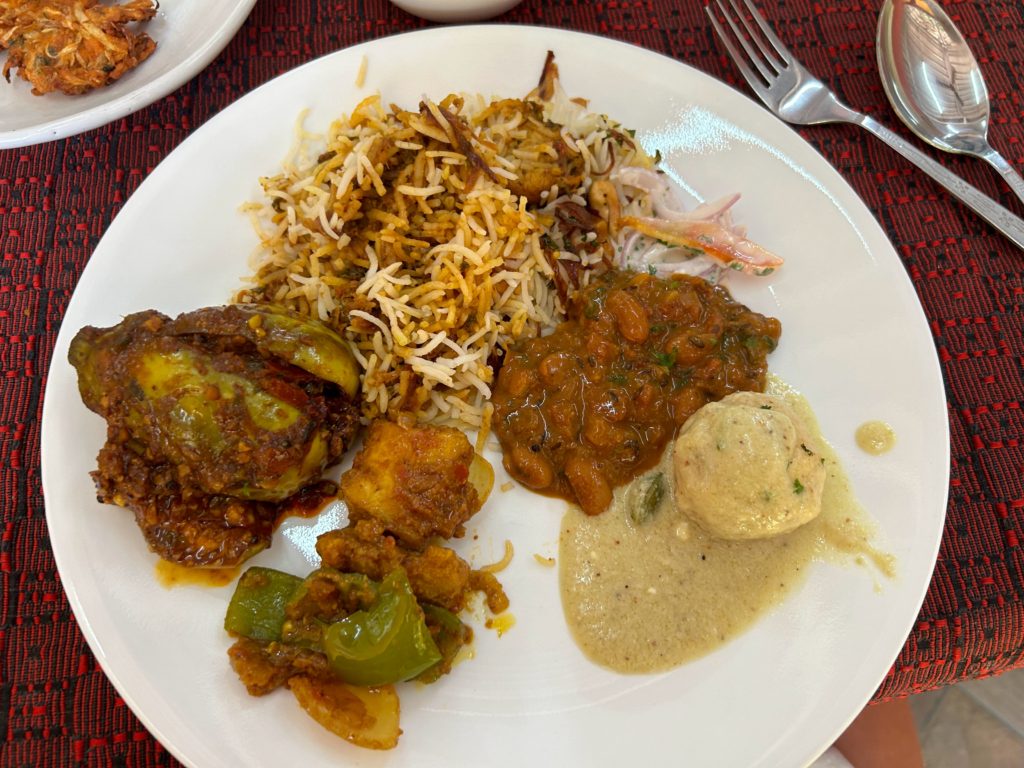
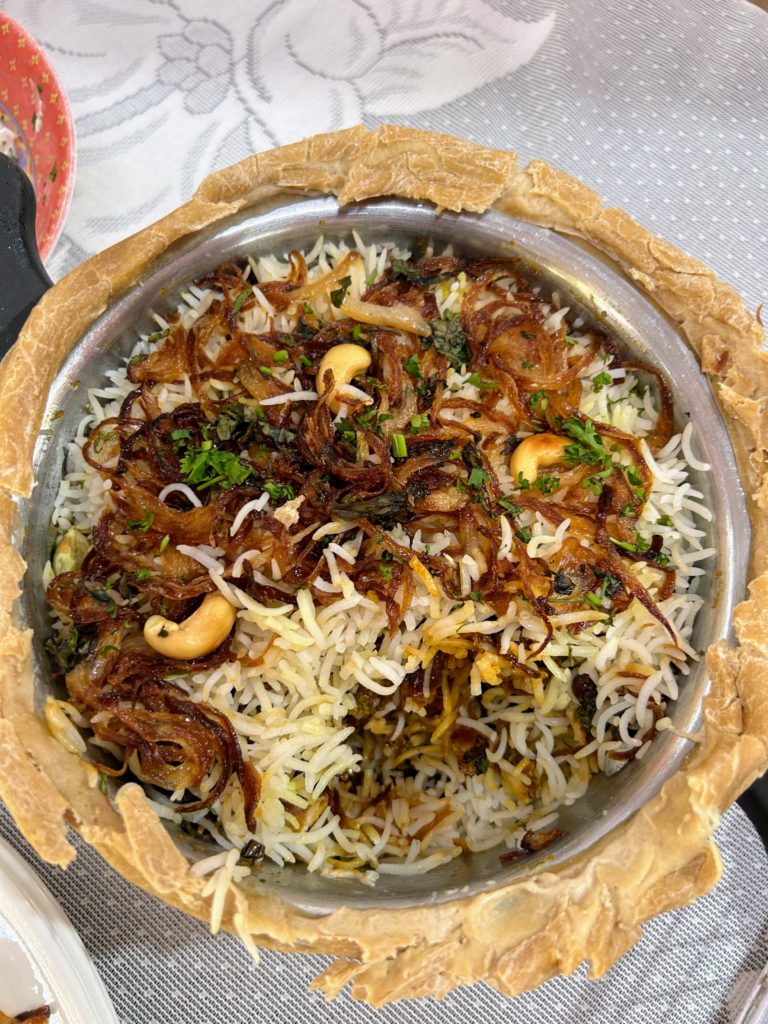
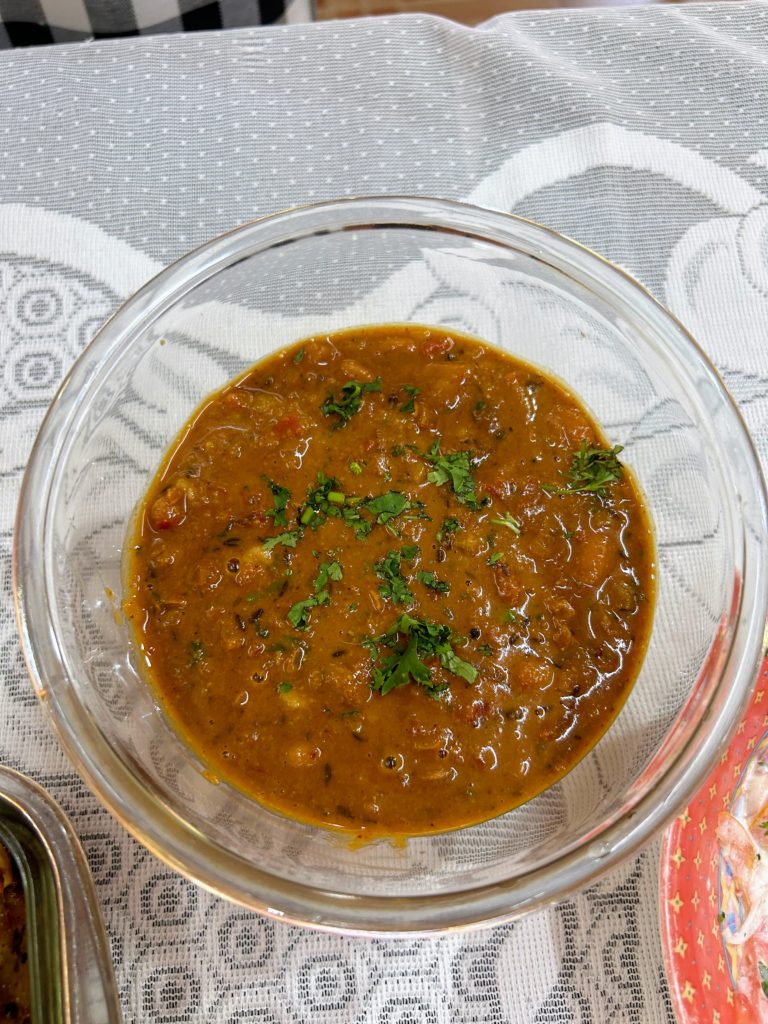
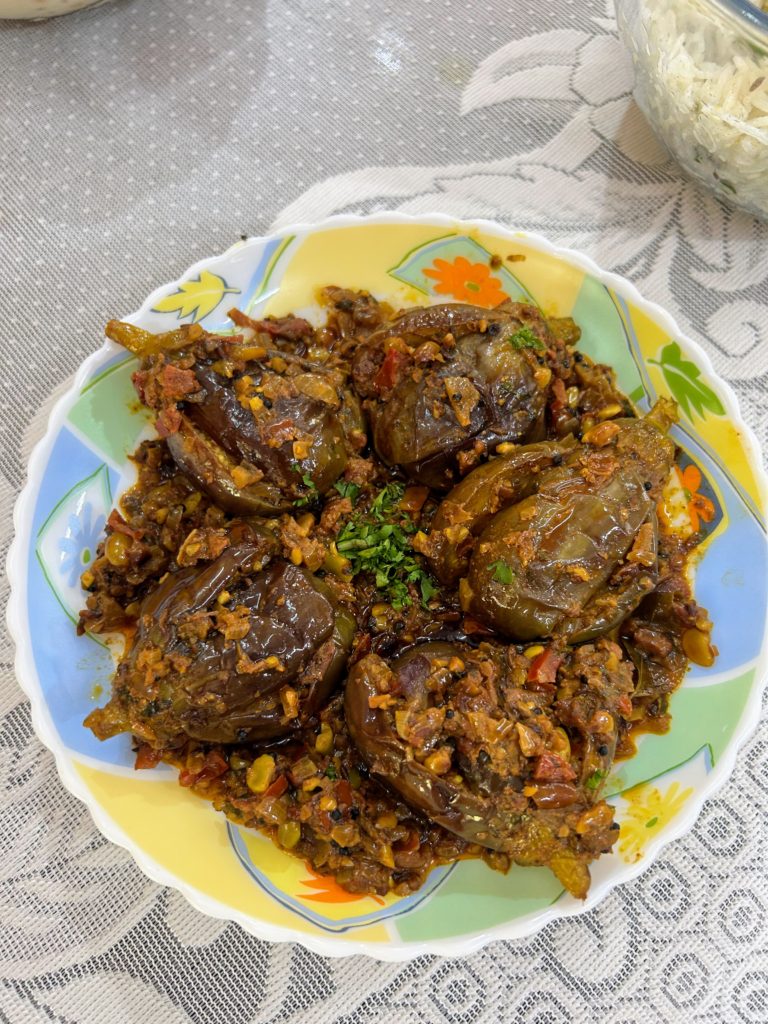
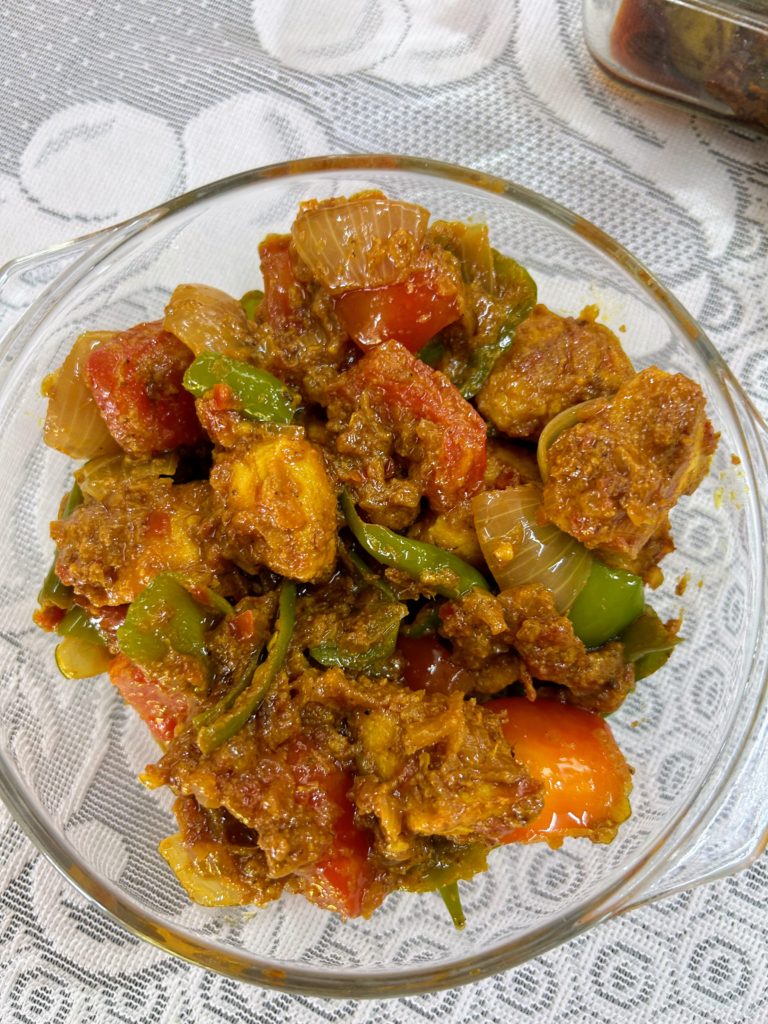
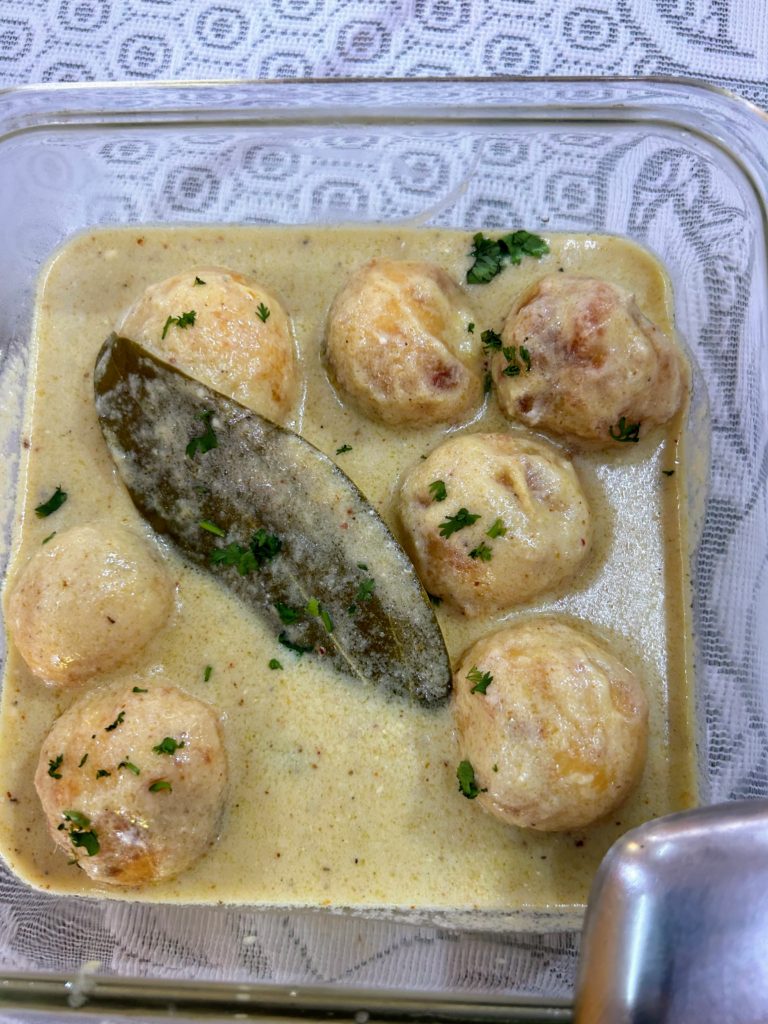
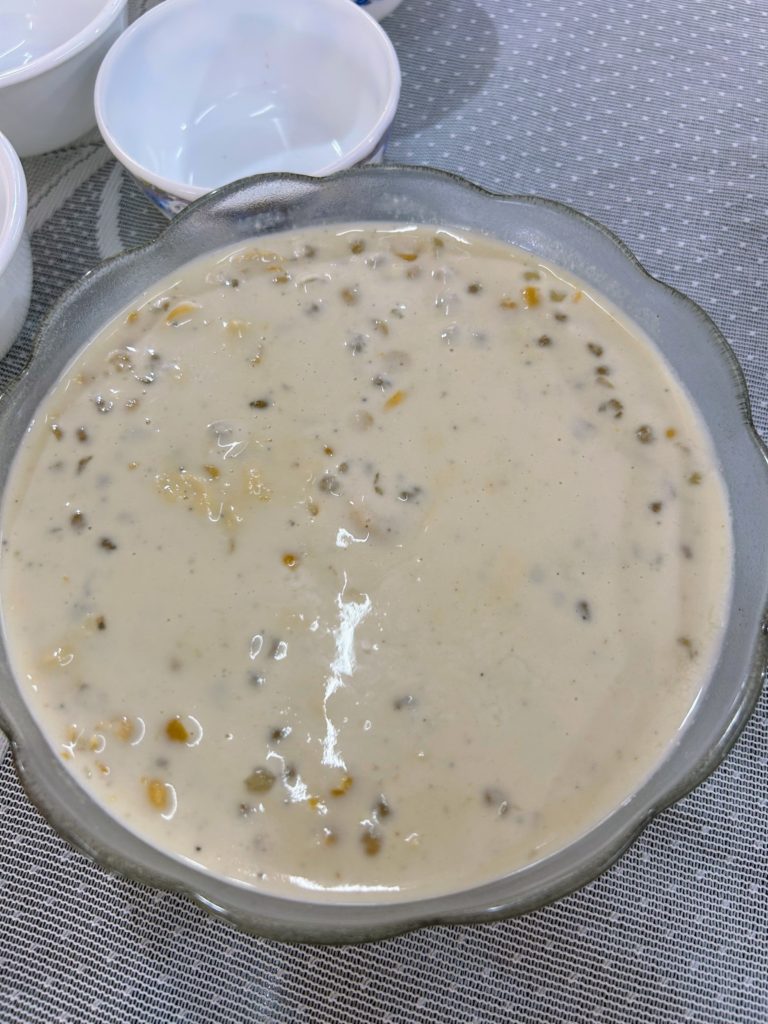
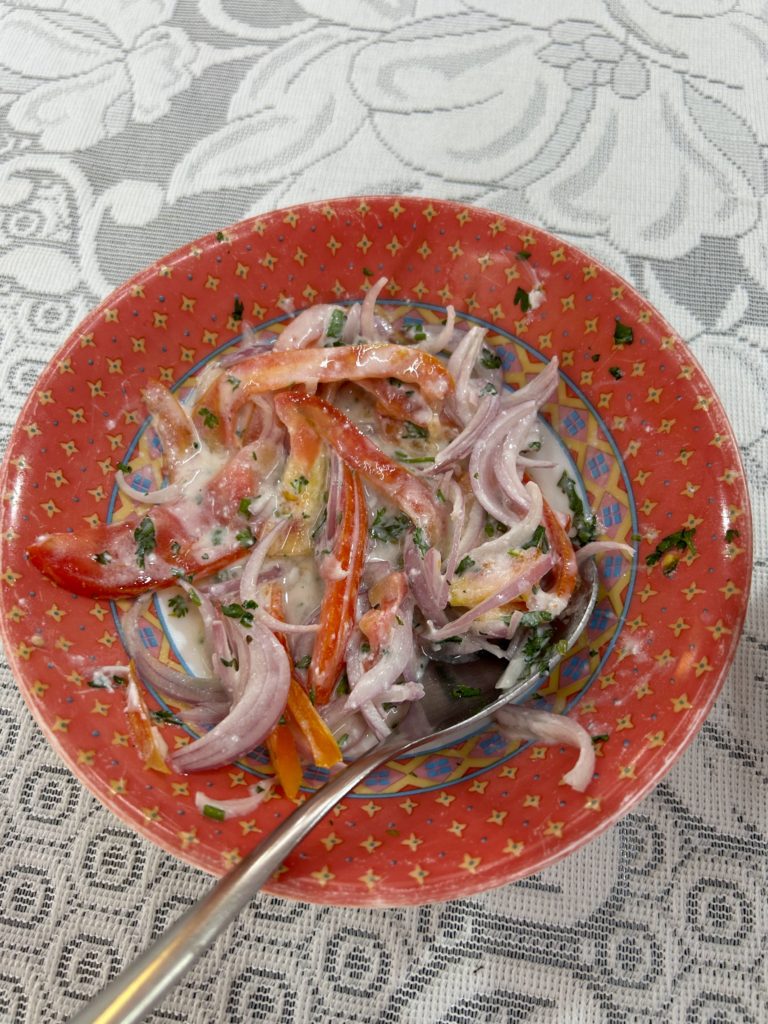
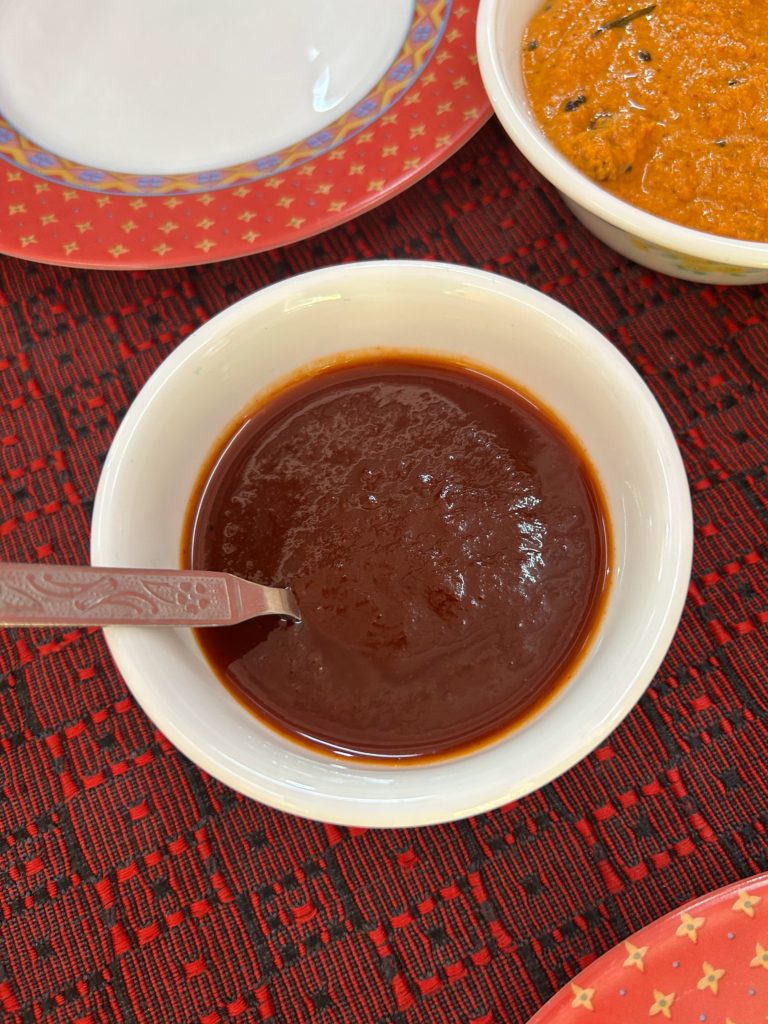
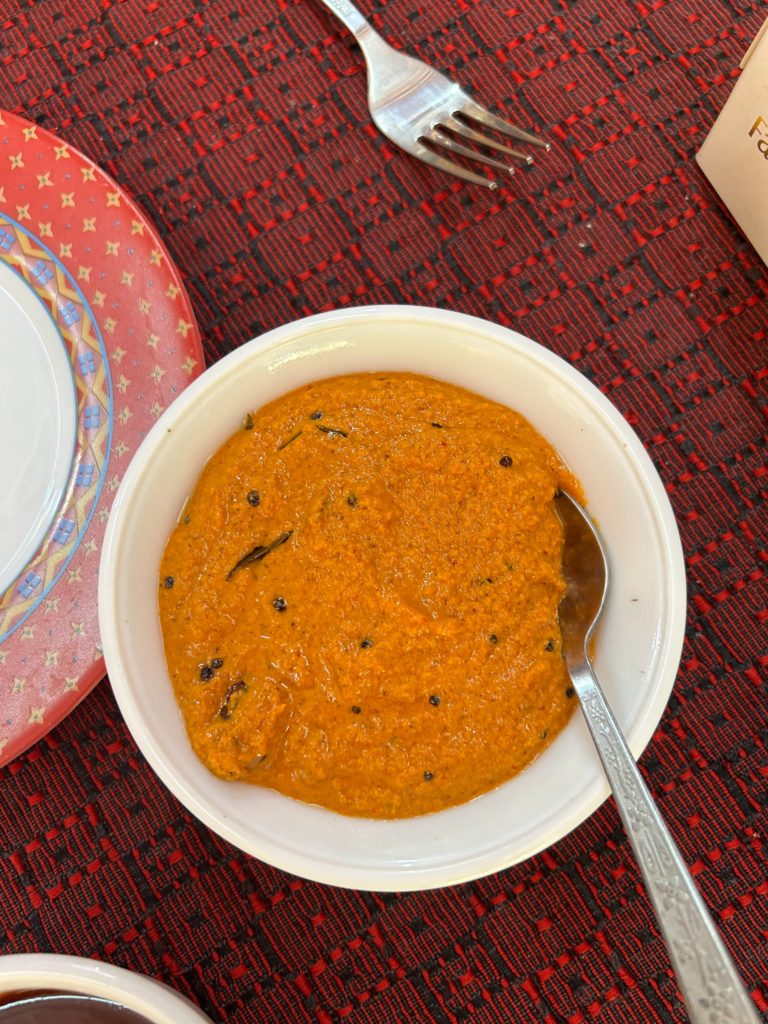
Reflection
We learned so much with Rita over our week here. Were coming home with around 50 new recipes form her kitchen to ours to create. But as much as we learned about recipes, we learned about so much more macro level stuff about cooking and hospitality.
An easy example is that people in India do not put their lips to their reusable waterbottle. When we aske Rita why, she calmly said “What if your guest want’s a sip?” Fair point. They might be weirded about germs and thirsty. Have to prepare for that.
Or how she never makes two similar dishes, one veg, one non veg for an event. It’s too easy for a vegetarian to get confused and accidentally eat meat, so she puts in that little bit of extra effort to make sure there is no confusion.
We learned how important prep work in creating a meal. Things go a lot smoother if all the veggies are chopped ahead of time, and all the necessary spices are within reach. Cleaning comes into this too. Things go a lot smoother if there’s someone in the kitchen just constantly cleaning the area making sure stuffs out of the way. Clean as you cook, truer than ever.
We learned the importance of diversity in dishes when serving a large dinner for 10-20 people. Not only differences in flavour, but colour and texture too. The Indian kitchen is great for this. There are red curries, black curries, yellow curries, green curries, white curries… the list goes on. You can make the curries chunky, smooth, or anywhere in between. All of these variations provide a chance for people to try a lot of different things, and settle on what they like.
There are lots of medium level lessons too. How to make the base curry. How to make fresh yogurt. Fresh bread. How not to burn spices. What spices go in when, and what heat. The absolute necessity of a pressure cooker. When to use oil, or ghee. Many more too. These skills all translate across different cuisines, and are helpful facts to have in the arsenal.
Overall it was a lovely time. Doing the class for 5 days made it feel more like a learning experience, and less like an event. We got to understand some fundamental concepts a lot better this way. We will do more like this in the future, we hope.
Good tips
Little tid bits we picked up during the week.
- When in doubt, add more oil.
- Powdered spices are for low heat only
- Use bread dough to prevent heat form escaping a pot.
- Properly cooked onions are king

I am very sure that you will have to cook A LOT so you will remember all of this and you will have many of us who will be ready to try your new dishes! This is admirable.
Yes, we are ready to taste your skills and I am happy to be the ‘cleaner’.
xoxo mom